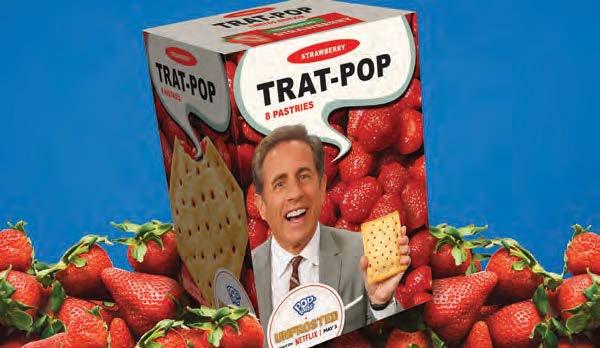DCFS STILL FALLING SHORT
Long-troubled child welfare agency is forced to confront ‘racial disproportionality’ | PAGE 19


Long-troubled child welfare agency is forced to confront ‘racial disproportionality’ | PAGE 19


Croke Fairchild Duarte & Beres hires a slate of politically connected lawyers
By Steven R. StrahlerCroke Fairchild Duarte & Beres is on a roll. Founded just before the pandemic, the law rm has grown vigorously despite that particular global disruption. And now it’s clouting up, hiring a bipartisan batch of lawyers promising access to some of the most lucrative and controversial projects on the drawing boards, like the Chicago Bears stadium proposal. A rm led by partners in their 40s is turning to their parents’ generation to help bring home the bacon.
are on board, with the number headed toward 100, su cient to rank about 30th among the city’s largest law o ces.
Croke Fairchild is aiming at a growing gap in Chicago’s legal market between behemoth law rms and the rest.
Booking a meal at a high-end restaurant? Plan on leaving the sandals and hoodies at home.
Chicago steakhouses and other high-end restaurants are increasingly implementing dress codes and lists of taboo items, establishing a new generation of attire requirements in a city that has long sought to elevate its ne-dining scene.
The new rules, which vary by restaurant, generally seek to ban casual attire like athleisure wear, flip-flops and hats and ask guests to dress in a “sophisticated” or “smart casual” manner. Some are more vague: Le Colonial in the Gold Coast “politely” requests “smart,
See DRESS CODE on Page 27
New guidelines aim to preserve ne-dining restaurants’ ambiance and keep too-casual patrons from ruining the vibe | By Ally
Restaurants must carefully train employees to enforce the rules without losing a customer.
ORPHE DIVOUNGUY
The city’s economy is stalling while the rest of the country is seeing positive developments.
PAGE 2
In the last few months, Croke Fairchild brought on David Reifman, the former Chicago planning and development commissioner, to build out a real estate practice and then hired Jim Durkin, who retired last year as the Illinois House Republican leader, to do the same with municipal clients. e rm tapped the third branch of government in luring former Illinois Supreme Court Justice omas Kilbride, who starts June 1, to develop an appellate court practice.
All told, more than 80 lawyers

Croke Fairchild’s surge is not unprecedented, but it is remarkable and comes with obstacles that have blown up many predecessors. Technology has lowered barriers to entry for startup law rms, but it hasn’t solved management issues associated with the rapid assembly of partners with di erent risk appetites, career goals and compensation requirements — lawyers who can choose where to live and work
See CLOUT on Page 26
CRAIN’S LIST
Our annual ranking of the Chicago area’s largest publicly traded companies.
PAGE 13

Even a broken clock is right twice a day. Unfortunately, the prophets of doom may have finally gotten one right.
 Orphe Divounguy
Orphe Divounguy
While I was hopeful for a Chicago turnaround and had remained very optimistic about the metro’s economic prospects, the most recent data confirmed my worst fears. It seems Chicago’s population problems will continue, at least for the foreseeable future.
The “end is near” signs are everywhere, and all one has to
do is look at the region’s labor and housing markets.
When job openings are more plentiful than there are workers, wages tend to increase rapidly and more workers form new households, which puts pressure on rents and house prices. Conversely, when the labor market weakens, rent growth typically slows.
As the Chicago-area labor market has cooled the past couple of years, annual rent growth decreased to 5.5% in March, down from a peak of 11.2% in March 2022, according to Zillow data. But while rent growth continued to cool nationwide, rent disinflation in Chicago stalled — not because of relatively higher demand for
housing, but because Chicago continues to lag the rest of the country when it comes to building new housing.
To keep housing costs in check, a steady increase in housing supply is necessary. Chicago’s rental vacancy rate is significantly lower than the national average. Typically, a low vacancy rate and high rents should spur more construction activity. Yet, as of March, construction sector employment decreased 0.5% over the previous year.
So, why not build more here?
The root of the issue is Chicago’s ongoing population decline.
While the U.S. worker population has grown over the past year, Chicago’s prime work-
ing-age population has decreased.
Despite this shrinking workforce, Chicago’s unemployment rate remains higher than the national rate. At the same time, annual wage growth has stagnated here. This stands in sharp contrast to the well-documented labor shortages and the strong 4.1% average annual wage growth across the country.
The Chicago economy is stalling while the rest of the country continues to see positive developments.
With wage growth outpacing rent inflation in most markets, rent affordability has improved nationwide. However, in the Chicago area, falling labor demand and stagnant wages
mean residents who stay, especially renters, will feel the pinch. Rising rents disproportionately affect low-income families since a higher share of their income ends up going to rent. And with so many taxpayers — large employers and workers — leaving Chicago, homeowners are also likely to see their property taxes increase again.
To escape this downward spiral, it will require concerted efforts from local government and business leaders to support small businesses and nurture talent. Local reforms that facilitate new housing construction are also essential to prevent more workers from leaving the region.
Green Thumb Industries, Verano Holdings and Cresco Labs each would keep millions that currently go to taxes. The question is when.
Removing marijuana from the federal government’s most dangerous class of drugs will give cannabis companies a much-needed nancial boost.
Cannabis stocks rose quickly April 30 after reports that the Justice Department has agreed to recommend the change. But the real payo comes from tax law. If marijuana is rescheduled from a Class 1 to a Class 3 controlled substance, cannabis companies such as Chicago-based Green umb Industries, Verano Holdings and Cresco Labs will be able to write o typical corporate expenses like other businesses.
e long-awaited move will mean $70 million to $100 million to the bottom line, potentially starting this year, which will further boost the value of the companies. It represents relief for an industry battered by falling prices, increased competition and steep taxes, as well as ine ciency that comes from a business that operates under a patchwork of rules that vary from state to state.
“Taxes were strangling these companies,” says Morgan Paxhia, co-founder of Poseidon Asset Management, a longtime investor in the cannabis industry. “Now all the sudden we’re talking about a growth sector again.”
Cresco expects to save $70 million to $80 million a year. Verano is likely to save about $80 million. GTI could save $100 million.
“It strengthens every cannabis operator’s balance sheet and makes us all signi cantly healthier organizations,” says Cresco CEO Charlie Bachtell. “It reduces the need for a lot of organizations to raise additional capital in a challenging capital environment.
“If you look at moderate expansion plans like Ohio coming online, you could self-fund the capital needed to build out or expand the operations.”
Some cannabis companies have been paying interest rates as high as 18%. As the prospects of rescheduling improved, those rates have fallen by half that amount. Companies that are facing loan maturities in the next few years will be better able to pay o or re nance that debt.
For companies already struggling, the tax savings will be a life raft after several stormy years in the cannabis industry. For those who are in better nancial shape, it will be an accelerator.
Among those who stand to bene t are new dispensary operators and growers in Illinois, who won licenses just as capital dried up.
“If you look at social-equity licensees, there’s been zero interest from the investment community,” Bachtell says. “ e cascading e ect, it will help provide greater access to capital for a lot of operators.”
How soon it will happen is uncertain. It’s been more than 18 months since President Joe Biden called for a federal review of rules governing marijuana. e process has dragged on longer than most expected. Exactly when rescheduling will take e ect is up for debate. After the Drug Enforcement Administration signs o , the Ofce of Management & Budget will review the recommendation and seek public input. Most observers also expect legal challenges.
Jaret Seiberg, an analyst at TD Cowen, says the process could drag out for months, into the presidential election and possibly beyond.
“ is may still be election de-
pendent as it would be unusually fast for an agency to nalize a change as signi cant as shifting cannabis to Schedule 3 in just six months,” he wrote in a note April 30. “It means Donald Trump may be able to block this if he prevails. We still believe Trump may simply let this change happen to eliminate the political headache, though we concede it is a close call.”
Bachtell is more bullish. “ e states have spoken. e public has spoken. . . . ere are very few

things that poll higher than medical cannabis. It would be a very
unpopular move for a future administration to unwind this.”
He and other cannabis CEOs, such as Verano’s George Archos, say rescheduling is the rst domino in a wider set of marijuana reforms.
“We still have issues as an industry of very limited access to capital and no access to U.S. (stock) exchanges,” Bachtell says. If cannabis companies were able to list on U.S. exchanges, which are larger and less dependent on retail investors than the Canadian markets where Cresco and others trade, the stocks would be valued three to ve times higher, Poseiden’s Paxhia says.




As hybrid work hammers downtown restaurants, one establishment believes it can nd its place in the Loop and in the craft beer industry’s new post-pandemic normal l
By Ally MarottiAnew brewery that opened in the Loop last month is going after the lunchtime and after-work crowds. But in a postCOVID world, that won’t be easy.
Illinois’ craft beer industry has su ered recently, as consumers have not yet returned to taprooms in the same volumes as pre-pandemic. People haven’t fully gone back to working downtown, either, and that means restaurants in the Loop are also struggling. Some establishments report revenues that remain lower than 2019, despite in ationary price increases.
Industry Ales, at 230 S. Wabash Ave., hopes to be an outlier. e
The 13,000-squarefoot brewery, which opened in mid-April, has already seen “a great uptick” in the after-work happy hour crowd.
Industrywide challenges have the private-equity-backed physicians group grappling with high debt loads
Katherine DavisFollowing various belt-tightening measures, including layo s and compensation cuts, Duly Health & Care was downgraded by a major bond credit ratings agency, an indication that the private-equity-backed physicians group’s nancial position continues to darken.
Moody’s Ratings downgraded Duly on three key metrics in an April 16 report, saying the action re ected its “deteriorating operating performance and very high leverage,” or debt loads, based on an analysis of the company’s nancial performance in the 12 months ended Sept. 30.
While Moody’s concluded Duly’s outlook is still stable, the ratings agency said it expected Duly to continue to struggle with weak liquidity and elevated leverage over the next 12 to 18 months.
e primary drivers for the spike in nancial leverage stem from a surge in operating expenses, like higher medical claims costs associated with value-based plans as more patients use services, a phenomenon that health care providers everywhere are experiencing, said Jaime Johnson, a vice president and senior health care analyst at Moody’s.
Duly’s high leverage is also related to recent expansions, including acquiring competi -
tors and opening new medical offices.
“As they add new practices, there will sometimes be startup losses,” Johnson said.
“We anticipate that (Duly) will continue to burn cash,” she continued.
The downgrade yields insights into the precarious future of Chicago’s largest physicians group, which provides care and jobs to thousands of local residents.
Duly’s revenue grew 28% to $2.5 billion last year, according to data that the company previously provided to Crain’s, but as a privately held company, it does not have to publicly disclose full nancial performance metrics. Even still, the Moody’s report shows Duly’s adjusted debt-toEBITDA (earnings before interest, taxes, depreciation and amortization) ratio was about 7.8x in the 12 months ended
Eleven of the 20 housing markets that buyers should check out, according to Realtor.com and The Wall Street Journal, are in the Midwest
Dennis RodkinWhen a new list naming Rockford as the nation’s hottest housing market appeared last month, one agent there got a bunch of messages from people in Chicago’s south suburbs.
e callers weren’t homebuyers. ey were her relatives in the Chicago metro area, “texting me, ‘Yeah, right,’ ” says Katie Oehlberg, a Re/Max Property Source and Chicago agent who’s lived in the Rockford area most of her life.
On most days, Oehlberg says, the messages she gets are far less skeptical, coming from people in places like Schaumburg and Elgin, who are looking for more a ordable homes than those towns o er. ey’re often rsttime buyers looking to maximize their housing dollar.
In Rockford, Oehlberg says, “they get bigger houses for less money and a lot more yard. We’re always being told our yards are unreal” compared to what a family might get closer to Chicago. On April 27, Oehlberg listed a
four-bedroom house with a quarter-acre lot on Linden Road in Rockford on the market at $250,000.
Rockford’s a ordable housing market helped put it at the No. 1 slot on a list of the nation’s hottest housing markets of rst-quarter 2024, compiled by Realtor.com and published rst in e Wall Street Journal on April 25. e median listing price for Rockford homes was $235,000 in March, according to the

From T-shirt makers to bakeries, the small businesses that supplied the two brands say they are out tens of thousands of dollars
Ally MarottiA T-shirt maker is out $116,000. A bakery lost $20,000. A craft brewery needs to find other stores to sell its beer.
The companies that supplied Foxtrot and Dom’s Kitchen & Market say they are out tens of thousands of dollars after the stores’ sudden closure last month. The businesses, many of them small and from Chicago, are scrambling to find new places to sell their products and ways to recoup their losses.
It won’t be easy. For some suppliers, Foxtrot and Dom’s served as an outsized portion of their business. Foxtrot, which was about a decade old, became a lifeline for many small food and drink makers during the pandemic. Customers were staying home and ordering delivery from places like the upscale convenience store. For such suppliers, it’s not just the unpaid invoices and lost work, it’s also the loss of a marketing vessel.
“I would get messages from people saying, ‘I’m buying your coffee directly from your site because I saw it at Foxtrot,’” said Justin Doggett, founder of Kyoto Black, a cold brew coffee company that had been selling its bottled product at Foxtrot since 2021. “It was a huge driver of traffic to my core business.”
Of the 35 stores selling Kyoto Black’s products, 15 were Foxtrot locations, Doggett said. It’s hard for small, packaged food brands to get consumers to try their products, and being on a shelf at a store like Foxtrot helped potential customers discover them.
“ ere was something about Foxtrot,” said Samantha Lee, co-founder of Hopewell Brewing in the Logan Square neighborhood. “ at’s where folks were looking for the small, local, Chicago-based brands.”
Hopewell’s beer always sold well at Foxtrot stores, Lee said. This year, beer sales at the retailer were on track to represent about 8% of Hopewell’s Chicago sales by volume. “That’s huge,”
she said.
It’s also a huge loss of potential sales at a time when the craft beer industry is facing its share of challenges. Consumers have not returned to tap rooms in the same volume as pre-pandemic, so breweries are having to rethink business models and get creative with where they sell. Lee said she’s been calling retailers near Foxtrot’s stores, asking if they’d be interested in carrying Hopewell’s beer.
“It sucks to lose a platform for local business, and for us it’s surprising,” Lee said. “We’re all surprised by it.”
Foxtrot and Dom’s, two Chicagoborn brands, began permanently closing their stores April 23. e Foxtrot location at 1019 W. Lake St. sent employees home and locked its doors before 10 a.m. that day. By midday, the companies had announced that both Dom’s locations, all 33 Foxtrot locations, and the parent company were being shut down.
Recently merged
e companies had merged less than six months before, and news of the closures was jarring to many involved. A source familiar with the matter said investors were told that same morning that parent company Outfox Hospitality was closing. Chicago-area shoppers — who had watched Foxtrot expand rapidly over the past decade and Dom’s burst onto the scene post-pandemic — gathered outside storefronts across the city hoping to pick up lastminute items and lamenting the news.
Employees across the country say they were not notified. At least three lawsuits from former workers have been filed in federal court in Chicago, alleging the companies violated workers’ rights by failing to give proper notice of the impending closures.
Suppliers were not told, either.
High Desert Print Company, a Santa Barbara, Calif.-based business that has been supplying Foxtrot with T-shirts, hats, sweat-

shirts and other goods for four years, delivered about $60,000 worth of summer apparel a couple of weeks ago. Between that delivery and other outstanding invoices, the company owes High Desert about $116,000, said founder Garrett Gerstenberger. Sales to Foxtrot comprised about 20% of High Desert’s revenue, Gerstenberger said. It had recently started making products for Dom’s, too. ough Gerstenberger acknowledged the risk of making such a big chunk of revenue from one customer, the unpaid invoices certainly hurt.
“ at’s the most material thing that’s going to a ect my longterm business and personal life,” he said. “I don’t know the nancial implications this is going to (have) on me.”
Gerstenberger said he tapped into debt nancing since the closures, hoping not to lay anyone o .
Chicago-based West Town Bakery is having to cut back employee hours in its cake department because of the closures.
e bakery, part of Fifty/50 Restaurant Group, supplied most of the pastries and cakes for both Dom’s locations. One of Fifty/50 Group’s other kitchens supplied food for Dom’s hot bar.
Outfox owes Fifty/50 about $20,000, said co-owner Scott Weiner.
“It’s labor that’s already been spent and paid for two months ago,” he said. “It’s very frustrating that there’s no communication and I feel a little misled. ey could’ve done a, ‘Hey, we’re struggling’ kind of call.
“It almost feels like I’m in a fantasy and they’re going to call me any minute now and say, ‘Hey, we’re going to take care of this.’”
A representative from parent company Outfox Hospitality did not respond to requests for comment.
At Fresh Market Place on the border of Logan Square and Bucktown, general manager Kosta Drosos is trying to nd shelf space at his independent grocery store to take on some of the products from Foxtrot and Dom’s suppliers.
“I’ve had over 50 small brands reach out to me in the last week, which is saying something, because I already carry 150-plus local Chicago brands,” he said.
Drosos said he’s also hearing from customers, asking if he’ll start to carry speci c products they could nd only at Foxtrot.
Products Drosos plans to add to shelves include Nemi, a Mexicoinspired snack made with cactus
and other ingredients; Carolyn’s Krisps, a crunchy plant-based snack; and leftover Foxtrot ice cream from Logan Square’s Pretty Cool Ice Cream. He plans to add more in the coming weeks.
Fresh Market has focused on adding products from small Chicago businesses to its shelves this year to di erentiate it from the big-box retailers. Drosos said he’s added more than 50 Chicago brands so far this year. Such a tactic can be bene cial for an independent grocer on several levels. Grocery stores have slim pro t margins, and it’s di cult for one-o locations to negotiate good prices from packaged food giants without economies of scale.
For small companies, getting on the shelf of a small grocer like Fresh Market can be quicker and easier than going through the corporate red tape at a chain grocer. Fresh Market can buy the products from the supplier, who gets their money immediately. Though Chicago’s grocery scene has seen some sweeping closures in the past, Drosos said he has not experienced a fallout to this level, in part due to the lack of notice suppliers received.
“In 20 years, I’ve never seen something so abrupt happen,” he said. “It just sent a shockwave throughout the whole industry.”
Large private-equity rms have had a big advantage over their smaller counterparts when it comes to raising money so far this year, as the uncertain economic environment has kept investors from adding new risk to their portfolios.
“ ey are able to go out and raise big funds really, really fast,” said Pete Witte, global privateequity lead analyst at Ernst & Young. “ en there is the rest of the market where it is just a lot
tougher. ey have to work a lot harder to sort of articulate the strategy and the value proposition and everything else.”
About half of the money raised in the private-equity universe so far this year has come from the closing of just 10 funds, Witte said.
Globally, private-equity rms closed 150 funds during the rst three months of 2024, the smallest total in any quarter since 2018 and 37% fewer than a year ago, according to nancial data provider Preqin. But the aggregate total of capital raised — $166.8 billion —
was just 6% lower than in the rst quarter of 2023.
Private-equity rms based in Chicago closed 17 funds during the quarter, down from 21 a year earlier. e rms raised $22.04 billion, a 49% jump from the rst quarter of 2023, through those funds, Preqin data showed. e capital raise was the third-biggest quarterly total on record.
“ is quarter has once again con rmed the trend toward industry concentration,” Preqin said in a report.
Uncertainty about the U.S. eco-
nomic recovery, sticky in ation and the Federal Reserve’s decision to hold interest rates steady have roiled expectations for a surge in buyouts of private companies so far this year.
“It is still a tough market for a lot of funds out there,” Witte said. “Concentration of assets is something that has been a longer-term trend. It has been accelerating in this market. Limited partners (LPs), when they have a choice as to who to fund, they tend to go with their biggest and best relationships.”
e diversi cation of investments o ered by the biggest private-equity funds is a huge draw, providing a measure of certainty at a time when con icting economic signals have weighed on markets.
“I think broadly the LPs are really attracted to managers that are able to invest across asset classes,” Witte said. “Having a broad platform where they can get exposure to credit and buyout and growth equity and infrastructure and all these other asset classes, that helps a lot.”
Even though Kellanova was not involved in the making of an upcoming movie about Pop-Tarts, that isn’t stopping the brand from seizing on it as a marketing opportunity.
Jerry Seinfeld’s Net ix lm “Unfrosted” is a ctional comedy about the Pop-Tarts origin story. Ahead of the lm’s release on May 3, Kellanova and the lmmakers partnered to make a short lm and a sweepstakes in a way to show the brand’s support of the movie.
e digital short, written by and starring Seinfeld, was made by Publicis Groupe-owned creative collective Le Truc and Net ix’s marketing partnerships team. In the short, Seinfeld meets with Pop-Tarts executives (and a PopTarts mascot), who accuse Seinfeld of trademark infringement for using the Pop-Tarts name without permission. So the executives steal some of Seinfeld’s IP, including well-known characters from his hit sitcom—attorney Jackie Chiles, girlfriend “Schmoopy” Sheila and the Soup Nazi. e meeting ends with the Pop-Tarts team showing the ctional show “People in Pontiacs Eating PopTarts,” a ri on Seinfeld’s “Comedians in Cars Getting Co ee.”
“When Seinfeld hijacks your brand story, the response isn’t a lawsuit, it’s to get in on the fun,” Julia Neumann, Le Truc’s partner and chief creative o cer, said in a statement. “Our digital short is based on the true story of Jerry not asking for permission to create ‘Unfrosted,’ a movie not brought to you by Pop-Tarts. Having Seinfeld tell Pop-Tarts’ origination story is bigger than any branding opportunity we could have imagined, but hijacking his IP in return might just be the frosting on top.”
Seinfeld directed, wrote, and stars in the ctional comedy with Melissa McCarthy and Hugh Grant. e movie is about the rivalry between Kellogg’s and Post (the maker of Honey Bunches of Oats and Fruity Pebbles cereals) as they race to create a breakfast pastry. e lm stems from Seinfeld’s Pop-Tart joke, where he questions why any other foods would be created when a pack of Pop-Tarts is perfect: one for each toaster slot, and they don’t go bad.
Telling the origin stories of brands—real or ctional—has been a popular movie plot line of late. And it is not unusual for the subjected brands to be sidelined during the process. Nike was not involved in the making of “Air,” the 2023 Ben A eck-directed movie about Nike’s pursuit of Michael Jordan. PepsiCo did not partake in the lming of Eva Longoria’s 2023 movie “Flamin’ Hot,” a ctional account of how a janitor came up with the idea for Flamin’ Hot Cheetos, which was based on the discredited janitor’s memoir. And McDonald’s sat out “ e Founder,” the true story of Ray Kroc, a salesman who met the McDonald’s brothers and maneuvered his way into owning and franchising the burger chain.
But Pop-Tarts doesn’t seem to be worried about being the named brand in “Unfrosted.” Along with the short, Kellanova is giving fans a chance to win limited-edition boxes of “Trat-Pops”—a nod to a plot point in the lm related to a typo. Consumers can enter for a chance to win by sharing their rst and last name, email address and birth date.
e campaign comes at a time when Pop-Tarts has found itself popping up in more cultural conversations. e brand sponsored the Pop-Tarts Bowl late last year, which ended in the toaster pastry mascot going viral for being low-


ered into a giant toaster, and then eaten by the winning team. e brand later heard that Taylor Swift had a homemade Pop-Tarts recipe and placed a full-page ad in the Kansas City Star asking her to share it.
“While Pop-Tarts was not part of the making of the movie, we’re excited about the opportunity to be a part of the viewing experience, and hope that fans enjoy the lm with a Pop-Tarts toaster pastry of their choice in hand,” Heidi Ray, Pop-Tarts’ senior director of brand marketing, said in a statement.
Erika Wheless writes for Crain’s sister site Ad Age.























these leaders

Zimmer, 58, is co-owner with her husband, Dave, of eight Chicagoarea and Rockford franchises of Fleet Feet, a nationwide chain of running shoe stores with more than 200 locations. They live in Glenview and have two adult children. | By
Tell us about your childhood.
I grew up in Chicago neighborhoods between Old Irving and Logan Square. My parents were divorced, so I spent a lot of my young years with my grandparents. I come from a blue-collar background with a strong work ethic and an open view of the world. We kids could ride up and down the block on our bikes and always felt safe.
What rst ignited your entrepreneurial spirit?
At 11, I got a summer job helping build art frames for my grandparents’ neighbor, who supplied Merrill Chase Galleries. He had a basement workshop and looked like Geppetto from “Pinocchio.”
He taught me how to build a whole piece, from cutting the wood and glass to assembling it. I did that into high school for $6 an hour.
Tell us about your exercise regimen.
I have done eight marathons and countless shorter races and triathlons, but now that I’m 58, I am less competitive and more focused on staying t and healthy. I run or walk three to four times a week and cycle or swim on the other days. Plus, I do core strengthening and lifting.
How did you two get started in Fleet Feet?
Laura BianchiSisters, Black Girls Run! Chicago and the Special Olympics. Our employees bene t from a sense of community and the importance of helping others.
A scary outdoor adventure?
One of the most hair-raising ever was hiking from Chamonix to Lac Blanc in France with our kids. Our kids were doing great, but my husband and I reached a height that was way out of our league. We were holding on for dear life to the mountain, on a gravely path with rocks aking o . e elevation gain was a breathtaking 3,280 feet. My heart was racing, and we were on the clock. e cable car that would take us down closed at 5. It was 4:30 and we were too tired to hike down. But we made it.
Your superpower?
Making lists, checking boxes


• Je rey Stern – Houlihan Lokey
• Jen Wahl – Sun Life
• Eric Seip – Ingredion
• Patrick Shields – JLL
• Rachel Howard – Bristol Myers Squibb
• Jason Ruger – Motorola
• Monica Mulvihill – Marex North America
Nolte – Walgreens
• Patrick Fitzgerald – Burke Beverage
• Michelle Samaniego – Walgreens
• Kevin Hughes – JLL
• Judy Teske – Bristol Myers Squibb
• Robert Mead – Big Red Rooster Flow
• Ross Lissuzzo – CIBC US
• Kristen Hill – Motorola Solutions

We both had corporate jobs but wanted to be entrepreneurs. He was at a bank, and I was at a marketing agency when I bought Dave a book on heart rate monitoring training by the woman who founded Fleet Feet. We saw an opportunity and ran headfirst into it, so to speak.
A philanthropic success?





















Ten years ago we started a charity-of-the-month program at our stores. We raise awareness with signage and sta conversations with customers. Since then, we have raised $1 million for organizations such as Big Brothers Big

Retailers have invested billions of dollars into convenience-based services, touting them as a better alternative to traditional providers
as recently as April.
Walmart’s health care strategy took an abrupt turn on April 30, as the company announced plans to shutter all clinics and stop virtual care services.
Industry watchers say Walmart’s decision to close all 51 centers isn’t surprising, given the steep challenges retailers face to pro tably deliver health care services.
Retailers have increasingly disrupted the health care industry over the last few years, investing billions of dollars into conveniencebased services, touting them as a better alternative to traditional providers.
e disruptors have found health care to be very di erent from retail.
Walgreens-backed VillageMD has shuttered about 150 primary care clinics this year, including some locations that closed less than a year after opening. Walmart had opened new clinics in Texas
Despite their competitors’ setbacks, CVS and Amazon are moving ahead with clinic expansion plans.
“Health care as retailing seemed to be a good idea, but nobody has been able to make it work at large scale,” Erik Gordon, an assistant professor at the University of Michigan’s Ross School of Business, said in an email. “[Walmart executives] are realists. e problems with the concept wouldn’t be cured by closing just some of [the clinics].”
Primary care, in particular, comes with its own set of issues. It is generally less expensive to deliver primary care, but those services come with low reimbursement rates, making it di cult to turn a pro t.
In Walmart’s case, its focus on serving customers in low-income, rural areas likely exacerbated the challenges by making talent acquisition more costly, said Craig Garthwaite, strategy professor and
healthcare director at Northwestern University’s Kellogg School of Management. High concentrations of Medicare and Medicaid patients can add to the reimbursement pressure.
“ ere’s no end of [executives] who have come in and said, ‘I think the problem in healthcare is that my genius and my business acumen hasn’t been applied to it yet,’” Garthwaite said. “ ey quickly nd out that healthcare just is a very hard business to work in. It’s very complicated.”
Retailers have tried to attract patients by marketing themselves as a more convenient and a ordable option.
Walmart touted the bene ts of its virtual care platform and attached health centers to its stores. VillageMD also leaned heavily into the co-location strategy, rolling out hundreds of primary care clinics attached to Walgreens pharmacies. CVS is piloting its own version of co-location.
Arielle Trzcinski, principal health care analyst at consulting rm Forrester, said Walmart failed to portray healthcare services as a core component of its sprawling business. Many consumers still weren’t aware of what health care services

Walmart o ered.
“ ey had a considerable amount of clinics, but they didn’t necessarily move beyond that, and they didn’t make a big investment or a big jump to say, ‘We’re putting a stake in the ground and we’re making a commitment here,’” Trzcinski said. “How do [retailers] make it more accessible and just part of the things that you already have to raise awareness, but also lower the entry barriers for consumers to adopt those services?”
Trzcinski praised Amazon’s strategy to incorporate its health care o ering into Prime membership, making it more prominent to consumers in a way that Walmart did not.
Some retailers continue to invest in the space despite setbacks.
Amazon acquired primary care
provider One Medical in a $3.9 billion deal in early 2023 and is on track to add about 15 clinics to its current list of 200 locations this year, said CEO Trent Green. It also plans new partnerships with health systems.
A year ago, CVS bought primary care provider Oak Street Health in a $10.6 billion deal. It plans to open 50 to 60 Oak Street locations this year, which would bring the count to at least 250 clinics.
“CVS remains determined to make it work,” Gordon said. “If it does, it will own a large market, but if it doesn’t gure out what went wrong at Walgreens and Walmart, we’ll see another big writeo and change of CEOs.”
Caroline Hudson writes for Crain’s sister brand Modern Healthcare.

The boat-shaped restaurant has gotten a $3 million makeover
By Ally MarottiCastaways, the boat-shaped restaurant at North Avenue Beach, is set to fully reopen Memorial Day weekend for the rst time since before the pandemic.
e lakefront eatery has been revamped with more seating, a new menu and a tweaked name. Formerly Castaways Bar & Grill, the restaurant will be called Castaways Beach Club.
“We felt that having a piece of that nostalgia with the name ‘Castaways’ re-imagined . . . you’re really elevating it to a beach club,” said Anthony Stefani, managing partner of Stefani Restaurant Group, which operates the restaurant. “ at’s really what we’re doing now. We’re modernizing the space, we’re giving it more of that beach club feel that you would nd in the Mediterranean or at a resort on the coast somewhere in Miami or Mexico.”
Stefani Restaurant Group invested about $3 million into the now-22,000-square-foot restaurant, Stefani said. It extended the footprint on the upstairs level
and added cabanas and a tented structure on the north end of the building. The cabanas will offer bottle service and a special menu and be available for private events. On the weekends, that area will be open only to patrons 21 and older. Stefani plans to have DJs and bands perform there, too.
On the south end of the upstairs — the side facing Chicago’s skyline — they installed arti cial turf and a new bar and plan to use that area for happy hours and corporate events.
e upstairs restaurant also got new tile, new tables and chairs, and a paint job. e menu is changing, too: Instead of burgers, fries and chicken ngers, it’ll be what Stefani called “global beach fare” — no details available yet on that menu — along with a retooled cocktail and drink menu.
e downstairs concessions area will still have two windows: one that sells burgers, wraps, tacos, soft drinks and other food, and one that sells ice cream, run by River North’s JoJo’s Shake Bar. Castaways will serve lunch and

dinner daily.
In recent years, crime at North Avenue Beach has caused safety concerns among customers. ere was a shooting in 2022, and in 2023, shots were red during a ght. Stefani said his family’s restaurant group plans to employ a security company.
“We intend to work with Chicago police and the city, as we always have, to really keep that area as safe as possible,” he said.
Since Castaways opened more than 20 years ago, Stefani Restaurant Group has had the contract with the Chicago Park District to manage food and beverages there, said Stefani, who started working there at age 14. Before the pandemic, the city put that contract up for bid, and Stefani Restaurant Group won it again. It is a 10-year contract, with five one-year options to renew.
The restaurant closed, along with all the city beaches, when the pandemic hit in 2020. Castaways did not open in 2021 and has only been open on a limited
From Page 3
report. In Schaumburg, it’s about $283,000, according to online real estate marketplace Red n. And in Elgin, it's $335,000.
e $235,000 gure is what sellers are asking for their homes.
Another indicator of Rockford’s hot market is that buyers are paying it. According to Red n, the median price of homes sold this spring in Rockford is about $204,000, up a walloping 24% from a year earlier.
Even with that increase, “it’s still more a ordable than other places,” says Dimas Trujillo, a Smart Home Realty agent in Loves Park, a Rockford suburb.
On April 26, he put a fourbedroom house on Trainer Road in Rockford on the market at $279,000, which he says would likely be priced at over $300,000 in Elgin or other markets. Seven buyers asked for showings in the rst few days, but it hasn’t gone under contract.
A ordability and climate resilience were the two key factors that put Rockford at the top and 10 other small Midwestern cities in the top 20, including Appleton, Wis., and the Michigan cities of Ann Arbor and Lansing.
“ e ranking identi es markets that those considering a home purchase should add to their shortlist,” Realtor.com’s report says. For the rst time, the analysis of 200 U.S. metro areas factored in climate resilience, the report says, because two-thirds of homeowners surveyed say they’re “concerned about the

basis for the past two summers, said Stefani.
“For me and for my sister, we grew up really learning the restaurant industry at this place, because all of our summers were given to it,” said Stefani, now 36.
“We know the potential of the place, we know the first decadeplus of the crowd that it drew there, and we hope to bring that lively atmosphere back and . . . just elevate it a bit.”
Stefani is the son of Phil Stefani, the restaurateur behind such storied Chicago spots as now-closed steakhouse Tavern on Rush. The restaurant group operates 10 establishments, including Stefani Prime steakhouse in Lincolnwood; Bar Cargo, a Roman-style pizza bar in River North; two Broken English Taco Pub locations; and Tuscany Taylor, Stefani’s oldest restaurant
threat of natural disasters to homeownership.”
Realtor.com calculated localities’ long-term risk of experiencing any of ve climate-change impacts — “extreme heat, wind, air quality, ood and wild re” — and found that 40% of all U.S. homes face “severe or extreme risk” in the next 30 years.
“Areas in the Midwest tend to be less impacted by these risks,” the report says, “giving buyers some peace of mind when taking on a home purchase.” In that re -
still in operation, in the Little Italy neighborhood.
Earlier this year, the group opened Stefani’s Bottega Italiana, a quick-service Italian shop and pasta lab, in the Norwood Park neighborhood. It also plans to reopen Tavern on Rush in July. The original Gold Coast location closed in 2022 after more than 25 years. A new restaurant, The Bellevue, now operates in its place. Stefani’s new Tavern on Rush is taking over the space once occupied by Nico Osteria at the corner of Rush Street and Bellevue Place.
“For Castaways, the remodel renovation is crucial to us, to really take us to the next decade, and for Tavern as well,” said the younger Stefani. “We’re hoping to really create new memories and bring back a piece of that nostalgia for everybody.”
Trujillo says, it’s only going to get stronger. Stellantis is reopening its plant in Belvidere, about 8 miles east of Rockford, and, with accompanying plants like a parts hub, could create about 5,000 new jobs in the late 2020s. Many of the people who come for those jobs “will buy in Rockford, because homes are cheaper” than in Belvidere, Trujillo says.
Located 89 miles from Chicago, Rockford may be a draw for people who commute to the northwest suburbs.
spect, they may be climatechange havens, a category that Duluth, Minn., leads, according to The New York Times.
In Rockford, the long-term risk is about one-tenth of the nation's, with 4.2% of properties at risk, the report says. The report does not look at the risk of tornadoes, such as the one that cut a path through Rockford in March 2023.
As with almost any housing market in America right now, Rockford’s fast-rising prices are largely the result of super-low inventory. Oehlberg says fewer than 300 homes are on the market right now, and “good, solid inventory should be about 1,400.”
If demand is strong now,
Located 89 miles from Chicago, Rockford may be a draw for people who commute to the northwest suburbs. The nextclosest city to Chicago on the list of hot markets is sixthranked Fort Wayne, 162 miles east in Indiana. Others, such as No. 3 Ann Arbor, No. 16 Appleton and No. 20 Lansing, may feel more like satellites of Chicago because of their universities’ alumni base here, but they are farther away in miles.
Home prices have been rising in Fort Wayne, too, though not as steeply as in Rockford. e median price of homes sold in Fort Wayne in April was $242,000, according to Red n. at's a 1% increase in the past year, 19% in the past two years, nothing as dramatic as the price spurt that Rockford has witnessed in the same period.
Being dubbed as one of the nation’s hottest housing markets won’t change much in Fort Wayne, says Broden Birk, an agent there with Century 21 Bradley Realty. “In the seven years I’ve been doing this, it’s always been hot,” he says. “ ere’s just a lot of demand.”
With thousands of apartments on track to open in the Fulton Market District, high-end tness chain
Equinox is eyeing a deal to give new residents a new place to work out.
e New York-based company is in advanced talks to lease more than 40,000 square feet on the second oor of the 400,000-square-foot ofce building under construction at 919 W. Fulton St., according to people familiar with the negotiations.
No deal has been nalized, and the discussions could still fall apart, sources said. But the lease would bring a luxury gym into the heart of a gritty-turned-trendy former meatpacking corridor that is getting a ood of new foot tra c from renters in high-rises under construction.
More than 2,000 apartments are now being built or were recently completed in Fulton Market, according to data from appraisal and consulting rm Integra Realty Resources. Many more are in the works in the surrounding West Loop environs, piquing the interest of Equinox and other gym operators that want to serve that burgeoning population.
Fulton Market’s tness o erings today include the Soho House hotel and private club, the West Loop Athletic Club near the neighbor-
hood’s western edge and a mix of smaller tness studios.
An Equinox lease at 919 W. Fulton would also appear to be a pivot from the tness company’s long-standing vision to plant its ag in the neighborhood as it has transformed into a hotbed of o ces, hotels and upscale restaurants. Equinox for years has been in tow with Chicago developer Related Midwest, which has touted the gym operator as an anchor of a big planned development at 725 W. Randolph St.
Related Midwest — whose New York-based parent company, Related Cos., is both a majority investor in Equinox and a stakeholder in the 725 W. Randolph property — rst began publicly discussing the idea in 2015 of developing a mixed-use project on the site with an Equinox Hotel and residential condominiums.
e City Council in 2020 approved a tweaked version of that proposal that eliminated the condos but included apartments and o ce space. en, during the COVID-19 pandemic, Related overhauled its plan with a new vision for a 41-story, 1 millionsquare-foot o ce building that would include a two-story agship Equinox Fitness Club & Spa. at project could still come to-
Cincoro Tequila, the spirits label co-founded by Michael Jordan, is raising funds from athlete investors as it prepares to enter several international markets.
Tennis legend Serena Williams and baseball hall-of-famer Derek Jeter are among the athletes joining the ownership group, along with pro golfers Dustin Johnson and Keegan Bradley. Jason Robins, the chief executive o cer of sports-betting rm DraftKings Inc., is also involved. Financial terms weren’t disclosed.
Cincoro is set to roll out its tequila o erings later this year in several major markets, including China, Japan, South Korea, Singapore, the United Arab Emirates and the UK. e products are being shipped now and should be available by early July, CEO Emilia Fazzalari said in an interview.
“Our plan is to really get this out internationally,” said Fazzalari, who’s also a co-founder. “Tequila, as a category, is doing well. It’s on the rise and it’s expanding globally.”
Popular category
Celebrity-backed spirits brands have proliferated in recent years, following the growth of labels such as George Clooney’s Casamigos tequila and Ryan Reynolds’ Aviation gin. Meanwhile, highend tequila has become a particularly popular category among consumers, according to the Distilled Spirits Council of the US.
gether if Related can pre-lease a portion of the planned building and land nancing, though the timing of the development remains unclear.
Related Midwest CEO Curt Bailey said last year that the tower would take about three years to build.
A Related Midwest spokesman declined to comment.
Under construction
In the meantime, Equinox is exploring a deal to open at a 919 W. Fulton project that is already under construction and on track to be completed next year.
Chicago-based Fulton Street Cos., in partnership with JDL Development and investor Shanna Khan of SNK Capital, broke ground last fall on the 11-story building running along the east side of Sangamon Street between Fulton and Lake streets. e developers inked a lease with private-equity rm Harrison Street Real Estate Capital to serve as the project’s anchor tenant, and separately signed a deal with Gibsons Restaurant Group to open a location in the building.
A spokesman for Fulton Street declined to comment, and a spokesman for Equinox did not provide a comment.
Fulton Street, JDL and SNK pulled o an improbable feat last year by securing a construction loan for a

new o ce project at one of the worst times on record for the o ce market. A senior portion of the $233 million debt package was provided by Little Rock, Ark.-based Bank OZK, while a junior, or mezzanine, portion came from Toronto-based investment rm Manulife.
Founded in 1991, Equinox has grown into a well-known luxury tness chain with more than 100 full-service tness clubs around the world, according to the company’s website. e company has four Chicago locations today, including one in the Loop, one in the Gold Coast and two in Lincoln Park.
Equinox announced in March that it had raised $1.8 billion in new capital to re nance maturing
loans and help fuel expansion with new clubs. Investment rm Sixth Street and private-equity rm Silver Lake led the funding round, and principals of Related Cos. also put money into the capital raise, according to an Equinox statement announcing the new funds. Equinox said in that statement that the company’s revenue increased by 27% in 2023 and saw member engagement at a higher level than during any previous year on record.
Todd Siegel of CBRE represents Equinox in lease negotiations. Matt Pistorio, Adam Pines and Abby McFadyen of leasing agency Madison Rose are marketing 919 W. Fulton on behalf of the developers.
Founded by Jordan and several other National Basketball Association team owners in 2019 after a series of dinners following league meetings, Cincoro now has a North American distribution network that reaches all 50 states, some Caribbean markets and duty-free stores. So far, it has sold about 2 million bottles of its various expressions, including blanco, reposado and añejo tequila.
Executives declined to share revenue gures and the business isn’t seeking more funding at this time.
Jordan has since left NBA ownership, having sold his majority stake in the Charlotte Hornets last year in a $3 billion deal. He remains an active businessman, with investments in companies such as sports-betting and technology rms DraftKings and Sportradar Group. He also has his sneaker line with the world’s largest sportswear company, Nike Inc., which generated nearly $6.6 billion in revenue last year.
Jordan, a six-time NBA champion who retired from basketball more than 20 years ago, said in a statement that he’s bringing some of “his closest friends” into the tequila venture as it goes global.
“We’re not about having an exit strategy,” Williams, one of those friends who has a sizable scope of investments in her own right, said in an interview. “My dream right now, as an athlete turned entrepreneur, is to just build great brands that I like.”







With his latest appointment to the Regional Transportation Authority board, Mayor Brandon Johnson is apparently honoring a Chicago tradition: picking someone who is politically connected but has no apparent expertise in the work at hand.
That fact became glaringly obvious on May 8, when the Rev. Ira Acree appeared before the City Council’s Transportation Committee seeking its endorsement prior to an expected vote by the entire council on May 22. During that gathering, Acree told alderpersons he was unaware of the estimated $730 million fiscal cliff facing the Chicago Transit Authority, Metra and Pace.
The budget shortfall ahead, expected to hit in full force at the end of next year when federal COVID relief funds dry up, has been the stuff of waking nightmares for transit experts and budget hawks over at least the past two years if not beyond — and it is one of the key drivers behind a recent call from the respected watchdog group the Civic Federation to abolish the CTA as an independent agency and fold it into an empowered RTA along with Metra and Pace.
This all apparently struck Acree as news. When asked by Ald. Scott Waguespack, 32nd, for his thoughts on the fiscal speed bump ahead, Acree replied: “Well, No. 1, this is my first time hearing about a $735 million shortfall. So I wouldn’t want to respond to that today without doing the research.”
Of course, Acree is a pastor, not a student of public transit. No one could fair-
VIEW

ly expect him or any other member of the general public to deliver a dissertation on urban transportation modalities or the vicissitudes of municipal finance — though one might have hoped someone at City Hall would have prepped him on the issues at hand before putting him in front of a nominating committee. Nevertheless, the Johnson administration’s stated purpose in nominating
Acree to the RTA board was to include a voice who would represent the average user of these services. And yet, even by that measure, Acree falls short, having admitted during his nomination hearing that he rarely rides the system — a trait he shares in common with CTA President Dorval Carter.
In selecting Acree — who sailed through the committee vote despite his
Here’s what you may not know
Over the years, I have been very fortunate to impact issues of global importance from my perch in Hyde Park, from the 2008 U.S. banking bailout as chair of the Bank of America board of directors to the construction of the international Giant Magellan Telescope as chair of that board. During the course of my career, I have met with presidents, partnered with Nobel Prize winners and advised captains of industry. I was asked in 2017 to take on another role, as chair of the City Colleges of Chicago board of trustees, and I was curious. Although I had held higher-education leadership positions at research universities and liberal arts colleges across the country, I had spent relatively little time thinking about our nation’s community colleges.

underdogs, undiscovered gems and little-known secrets. ey are too often also funded at a fraction of their four-year research institution peers. Nonetheless, they are deeply enmeshed in the fabric of communities. As I recently have retired from the City Colleges board, I am compelled to share some of what I have learned.
is is not uncommon. Despite the ubiquity of their alumni, community colleges continue to be perceived as perennial
Two-thirds of the jobs in our country require some postsecondary education, making City Colleges a critical gateway to quality, a ordable and necessary higher education for more than 60,000 students every year, three-quarters of whom are Black or Latinx students. City Colleges alums are health care sta at our local hospitals, apprentices at major global companies, police o cers, early child care providers and entrepreneurs. e system nurtures the diverse talent that our city needs. According to research conducted by Harvard economics professor Raj Chetty, City Col-
testimony, by the way — Johnson is taking a step toward fulfilling his prerogative to appoint five members to the RTA’s 16-member board. Acree’s credentials for this appointment mirror those of Johnson’s earlier pick for the CTA board, Pastor Michael Eaddy, who sailed through the appointment process in April more on the strength of his political connections than his transit experience.
Johnson is apparently honoring a Chicago tradition: picking someone who is politically connected but has no apparent expertise in the work at hand.
The practice of placing inexperienced representatives on the boards overseeing such critical public assets may be time-honored, but it’s one an administration dedicated to reform and improving the quality of life for all Chicagoans must seriously rethink — especially now, as the beleaguered RTA and the agencies it controls struggle to bounce back from the pandemic.
The challenges facing the region’s transportation agencies are too severe to be overseen by amateurs, no matter how well-meaning or well-connected they may be.
leges is in the top 10% of all public two-year colleges in helping its students achieve upward mobility.
City Colleges has become a magnet for major institutions seeking to partner. It is a more visible convener and attractive collaborator, approached by leaders of major universities, government and business.
e University of Chicago is partnering with City Colleges in a multitude of ways: on development of a data science program, o ering students exposure to molecular engineering and partnering to support an expansion of health care programs and practicums on the South Side. e state of Illinois chose City Colleges to colead the workforce development and community awareness component of its multimillion-dollar investment in a quantum ecosystem. e members of the Chicagoland Apprenticeship Network — dozens of the most well-regarded companies across the city — seek out City Colleges students and alums for work-based learning and careers in in-demand elds. As partner to
the city, the institution consistently steps up during the toughest of challenges.
Enrollment at City Colleges is rebounding to pre-COVID levels, with growth surpassing both national and state enrollment averages. Of particular note, while Black male student enrollment at public two-year colleges nationally increased 0.6% from fall 2021 to fall 2022, during the same period, Black male enrollment increased 5% at City Colleges and was up another 16% this past fall. Also close to my heart is City Colleges’ engineering pathways program, housed at Wright College. Funded by the National Science Foundation, this program has grown from a couple dozen students six years ago to more than 500 budding engineers today, more than two-thirds of whom are Black and Latinx students.
Under Chancellor Juan Salgado’s leadership, City Colleges has also shored up the institution’s nancial health, overcoming a legacy structural de cit to achieve positive net assets and ending last year with the highest cash reserves since 2015. e sys-

In April, several Jewish communal leaders and elected o cials declined a meeting request from Mayor Brandon Johnson’s team. e news made headlines. Why would the mayor’s presumptive attempt at extending “an olive branch to (the) Jewish community amid Gaza protests” (April 15) not be embraced? Let me explain.
The request follows Mayor Johnson’s inexplicable failure to support the Jewish community time and time again.
First was his refusal to support Ald. Debra Silverstein’s reasonable resolution after the Oct. 7 massacre in Israel condemning the terrorist group Hamas, calling for the release of hostages, and supporting Israel’s right to defend itself.
Second was his silence when Jewish high school students had to be snuck out of City Council chambers after public hearings on the Israel-Hamas resolution, followed by his praising Chicago Public Schools students who walked out of class chanting anti-Israel and antisemitic slogans — while Jewish students and teachers hid. is is not be tting of a mayor who was elected to represent all of us.
Third, his arm-twisting and tie-breaking cease-fire vote in January and refusal — again — to stop or condemn antisemitic disturbances by protesters during
tem saved nearly $29 million by renancing general obligation bonds in January, supported by 100% minority-owned bond underwriting rms. e positive national reception to this bond o ering was reective of trusted leadership, strong post-pandemic enrollment gains and recent credit rating upgrades.
At the same time, City Colleges is a learning institution, committed to its own continuous improvement. City Colleges is working through plans to achieve equity in student outcomes alongside Chicago Public Schools, to scale up work-based learning opportunities and to provide a clear pathway for adults seeking to return to school, knowing the work is far from done.
As I move to my next chapter of service, I say to the new trustees: You have inherited a gift; please help steer the institution to reach its full potential. I call on our city to rally around our community colleges. Support their vision of serving as the city’s most accessible higher-education engine of socioeconomic mobility and racial equity. Support equitable funding for community colleges that serve all who seek an education. Join me in supporting City Colleges as they work to create a truly equitable Chicago economy.
those proceedings.
Fourth, while expressing appropriate concern for the loss of innocent lives in Gaza, he was silent on the plight of 133 hostages and Hamas’ atrocities and crimes against women. And he’s been silent on Iran’s unprecedented drone and missile attack.
e mayor’s consistent actions haven’t been ukes; they’ve been a feature of his tenure. Our community’s apprehensions were ampli ed when Mayor Johnson’s team did not respond to questions seeking transparency about the meeting agenda and participants
— concerns that were later conrmed by the inclusion of some fringe groups who are not representative of Chicago’s Jewish community.
Mr. Mayor, you have a community of people hurting and you have a unique opportunity to use your voice for good. For 180 years, Chicago’s Jews have partnered with each of your predecessors. We’re prepared to partner with you, too, but not at the expense of our e orts to combat antisemitism or stand with our community. It’s time for meaningful listening, learning and action.


Lamar Johnson Collaborative, Chicago
Conlon Public Strategies, Chicago
Grund & Leavitt, P.C., Chicago
Morreale Communications, Chicago

Yeary

Lamar Johnson Collaborative (LJC) has promoted Lance Yeary to Principal. Lance expertly designs compelling interior environments for corporate, hospitality, and multi-family settings. He collaborates with clients to infuse innovative solutions with their distinct visions, resulting in functional and user-centric spaces. Lance holds a Bachelor of Fine Art in Interior Design from the University of North Texas. LJC has promoted Rachel Walter to Associate Principal. She oversees clients’ projects from start to nish, handling design, consulting, and construction coordination. She holds a Master of Architecture and a Bachelor of Architectural Science from the University of Illinois Urbana-Champaign.
Museum of Contemporary Art, Chicago
Dr. Joey Orr has been appointed to the Deputy Director and Chief of Curatorial Affairs position at the MCA Chicago. In this position, he will oversee the MCA’s Artistic Division. Dr. Orr currently is serving as Mellon Curator at the Spencer Museum of Art and as af liate faculty in Museum Studies and Visual Art at the University of Kansas; he returns to the MCA in this leadership role after previously being selected as the Mellon Postdoctoral Curatorial Fellow.














Chicago-based consulting rm Conlon Public Strategies is pleased to announce that Peggy Parfenoff has joined the rm as a senior advisor. For the past 22 years, Peggy was the president of WorldChicago, a nonpro t that is the of cial host to U.S. Department of State international exchange programs. Her expertise includes nonpro t growth and capacity building, strategic plan creation, board development, federal grant management, fundraising strategies, and international travel and expansion.

Wintrust Financial Corporation, Rosemont
Wintrust Financial Corp., a nancial services holding company based in Rosemont, Illinois, with more than 170 locations across Illinois, Indiana, and Wisconsin, is pleased to announce two promotions. Nick Bruce was promoted to SVP, Team Leader, Commercial Banking at Wintrust Bank, N.A. Nick joined Wintrust in 2022. Kevin Watterlohn was promoted to SVP, Client Services Manager at First Insurance Funding. Kevin will celebrate 10 years at Wintrust in August.



Grund & Leavitt, P.C. is pleased to announce the appointment of Elizabeth Davies Shindler as a partner. Ms. Shindler has more than 10 years of experience practicing in the eld of family and matrimonial law, with a special emphasis in litigation, arbitration and mediation. She represents clients in a variety of complex domestic relations issues including prenuptial and postnuptial agreements, divorce, paternity, custody, visitation, spousal and child support.

Leading talent advisory rm DHR Global is pleased to announce the promotion of Priya Taneja to the position of Chief Operating Of cer. As COO, she will be pivotal in shaping the rm’s strategic direction and operational excellence. Priya’s impact is felt in employee development and engagement, where she leads initiatives that foster a positive workplace culture and align with the rm’s strategic goals. Under Priya’s guidance, the rm has won several awards for its service and culture.


United Neighborhood Organization (UNO), Chicago
United Neighborhood Organization (UNO) unveiled a new brand to re ect its mission in serving and empowering young girls to lead change within themselves, their communities, and beyond. To helm this work, the UNO Board announced Maya Solis as Executive Director to shepard the organization into this new era of programming centered on girls. A proud Pilsen native, Solis brings decades of public service experience and a commitment to girls empowerment, mentorship, and public health.


Kim Morreale McAuliffe, founder and CEO of Morreale Communications, was named 2024 Top Women Business Entrepreneurs by PRNEWS. As the company visionary, the expansion of the agency’s portfolio in healthcare, utilities, transportation and public affairs has led to an average of 40% annual growth since 2016. With a diverse leadership team and 85% female and minority workforce, Morreale has become one of the largest BEP/WBE/WBENC certi ed public relations agencies in Illinois.

Morreale Communications, Chicago

Harmony Harrington is now Vice President of Public Affairs at Morreale Communications. The former healthcare executive, lobbyist, Illinois House of Representatives staff attorney, and policy advisor to former Illinois Lt. Govs. Wood and Quinn will oversee the rm’s growing Strategic Communications portfolio. Harrington received her JD from Loyola University Chicago, serves on the Board of Directors at Haymarket Center, and is on the City Council in Park Ridge, Ill.


Patrick Brutus brings more than 25 years of public sector experience in economic and community development to his new role at The Desk. He has worked citywide to redevelop troubled properties, stimulate small business growth, and advance workforce readiness, and most recently served as a Planner in the City of Chicago’s Invest South/West Program. In his new role, Patrick will lead a program called CorridorLive!, transforming local business districts in the community’s vision.
Suzanne Hendrick has joined Xroads Real Estate Advisors, a national full-service real estate asset management, property management and advisory rm, as executive vice president. She brings more than 30 years of experience in asset and property management, most recently serving as executive vice president of asset services operations at Transwestern. In this role, Hendrick will help drive Xroads’ national and Chicago-area portfolio strategy and services implementation.


Jacqueline Cooks! Chicago, IL jacquelinelaurencelle.com
Classically French-trained chef Jacqueline Laurencelle and EMMY Award winning producer/director Gary May announced they are teaming to create a new television cooking series and cooking/healthoriented content for local news broadcasts. Laurencelle and May are also developing a syndicated cooking show, Jacqueline Cooks!, that will launch in September. “My goal is to inspire others to live joyfully by making healthy cooking and eating accessible, fun, and always delicious,” said Laurencelle.










1 WALGREENS BOOTS ALLIANCEINC. Deer eld; WBA; 847-315-2921 WalgreensBootsAlliance.com
2 ARCHER-DANIELS-MIDLANDCO. Chicago; ADM; 312-634-8100 ADM.com
4 DEERE &CO. Moline; DE; 309-765-8000 Deere.com
5 ALLSTATECORP. Northbrook; ALL; 847-402-5000 Allstate.com
North Chicago; ABBV; 847-932-7900 AbbVie.com
872-825-4000 United.com
Bolingbrook; ULTA; 630-410-4800 Ulta.com
25 MOTOROLA SOLUTIONSINC. Chicago; MSI; 847-576-5000 MotorolaSolutions.com
DFS; 224-405-0900 Discover.com
Downers Grove; DOV; 630-541-1540 DoverCorporation.com
847-370-2317
Northbrook; SCL; 847-446-7500
Chicago; CENX; 312-696-3101 CenturyAluminum.com
MEI; 708-867-6777 Methode.com
Schaumburg; PCTY; 800-520-2687 Paylocity.com
& STRUGGLES INTERNATIONALINC. Chicago; HSII; 312-496-1200 Heidrick.com
DataprovidedbyS&PGlobalMarketIntelligence,withadditionalresearchbySophieRodgers(sophie.rodgers@crain.com).|IncludespubliccompaniesinCook,DuPage,Kane,Lake(Ill.),Lake(Ind.), McHenry,andWillcountieswithannualrevenueofmorethan$50millionandamarketlisting.Deere&Co.andRLICorp.areoutsidetheseven-countyarea,butCrain’smakesexceptionsforthembecause oftheirsize.All nancial guresarefromthemostrecent10-Ks,unlessotherwisenoted.Revenuesandpro tscorrespondtothe scalyearofeachcompany.Netincomereferstonetpro ts,including extraordinary adjustments and discontinued operations. 1. FTE indicates full-time equivalent. 2. Represents implied market cap; may include shares/units that do not participate in earnings distributions.





‘racial disproportionality’ |
By Cassandra West and Michael LiptrotOn the surface, the term “child welfare system” sounds benign and benevolent. Laws governing child welfare target the well-being, permanency, and safety of children and families.
But for years, the Illinois Department of Children & Family Services, or DCFS, the government agency charged with child protection, has fallen short of its mission. So short, in fact, that a 1995 newspaper editorial branded the DCFS “the poster child for government indi erence and ine ciency.”
Last December, Marc Smith, the longest-serving DCFS director in more than a decade and the 11th leader in less than eight years, resigned following a scathing report citing extensive problems going back decades. e report found that in 96% of cases where credible evidence of abuse was found, DCFS failed to quickly notify schools. Among other problems within the agency, which is responsible for more than 23,000 minors in the state’s care: failure to maintain proper segregation of duties regarding day care provid-

ers, noncompliance with the state's Children & Family Services Act and the Adoption Act, and improper use of funds.
"Some of these ndings are on repeat dating back more than 25 years," Cook County Chief Deputy Public Guardian Alpa Patel told CBS2 News.
A 2023 report from the Children & Family Research Center at the University of Illinois Urbana-Champaign brought another unsettling fact to the forefront: See DCFS on Page 20

In Cook County, a Black child is almost three times as likely to enter substitute care, that is, being removed from their families and placed in foster care or relative home care.
From Page 19
Black children are overrepresented among all child protection outcomes, including investigations, protective custodies, indicated investigations, intact family services and substitute care entries.
"One of the signi cant reasons for racial disparity in foster care is the prevalence of poverty," says Bonita Carr, executive director of Court Appointed Special Advocates of Cook County, which represents children and families navigating the foster care system. Most of the children CASA helps come from ZIP codes in Chicago communities like Roseland and Austin, she says.
Of the children in foster care in Cook County, 67.1% are Black, though they make up 23.7% of all children in the county. Statewide, 15.3% of children are Black, but of the children in foster care statewide, 38.4% are Black. e poverty rate for Black children in Illinois is 34%.
A 2022 Human Rights Watch report, “ ‘If I Wasn’t Poor, I Wouldn’t Be Un t’: e Family Separation Crisis in the US Child Welfare System,” documented how conditions of poverty, such as a family’s struggle to maintain housing, are misconstrued as neglect and interpreted as evidence of an inability and lack of tness to parent.
In Cook County, a Black child is almost three times as likely to enter substitute care, that is, being removed from their families and placed in foster care or relative home care. Black children are twice as likely to be investigated for any type of maltreatment and the least likely to nd a permanent home or be reunited with their birth family.
“( e child welfare system) is de nitely broken,” says Carmyn Tassone, who shortly after birth was placed with a grandparent, then a foster family. She did not reconnect with her birth parents until she was 18. “ is system says that ‘we're for the families,’ but (it's) not. It’s stripping families and unfortunately stripping kids and predominantly Black kids from their families and putting them into other places, whether that's residential living, group homes, foster families.”
Tassone, whose mother is Puerto Rican and father is African American, was placed with white foster parents and their four biological children. e foster parents eventually adopted her.
Until her teens, Tassone lived with the family in Sandwich, Ill. e town has less than 8,000 residents and is 80% white and 1% African American. At home and in school,
Over the last seven years, the DCFS budget has nearly doubled — $1.22 billion in scal year 2019 to a proposed $2.36 billion for scal year 2025. Much of the money is going toward bee ng up staff.
Source: Illinois Department of Children & Family Services.
Tassone says, she “experienced a lot of racism from family and people around me.” And when she told her adopted parents that she is gay, "they took all my stu , put it out on the front porch,” she says. “ ey told me I wasn’t welcome (at their home) anymore." Tassone struggled to stay in college and became homeless.
Tassone's experiences re ect those of many children of color and their families involved with child welfare systems across the country, according to multiple studies. Non-white parents also are more likely to have their children taken from them and placed in foster care, which can lead to a cycle of balancing court dates with work and home, or lack of work and a precarious housing situation, for families on the margins.
Children separated from families often struggle or fall behind academically and become socially disconnected from peers. ese factors make economic stability, let alone upward mobility, almost impossible and contribute to another generation facing a hard climb to a self-sustaining life.
Vanessa White, director of community and family justice at the Shriver Center on Poverty Law, says families who have the highest removal rates have the least access to resources that could keep them intact. "A lot of these removals are based on issues of neglect, which are things that are basic human needs,” she says.
Carr blames a society that she says fails to support families.
"Should parents be punished for neglect or should we provide the support they need to stabilize that family versus destabilizing them," she says.
Keeping families intact increases the chances that children, and

their parents, can thrive. A federal law signed in 2018, the Family First Prevention Services Act, is meant to address that. e U.S. Department of Health & Human Services Children’s Bureau approved DCFS’ Family First Prevention Plan in 2021. Over ve years under the plan, the state pledged to prevent children from entering foster care, encourage and support kinship care, shorten lengths of stay and improve the quality of care when residential care is appropriate.
“One of the presumptions within the child welfare system is that the best person to care for the child is the government," says LaTanya Jackson Wilson, vice president of advocacy at the Shriver Center. " e government becomes the caretaker, ignoring the fact that harm takes place when you remove a child from their parents. . . . e government is not good at taking care of children.”
Financial hardship is a primary reason families, particularly Black families, come in contact with the foster care system.
“A lot of the issues are nancial-related,” says Tina Lewis, an assistant public defender who has spent over 15 years representing the families of children in foster care.
“Let’s say a kid is taken away from mom for something not what you would consider the worst case — not sexual abuse, not physical abuse, not medical neglect. It’s just mom maybe leaving her 6-year-old home alone because she has to work and couldn’t nd a babysitter. at allegation would be a substantial risk of harm.”
“Instead of providing mom with nancial support to help with child care, the system will take the child away,” Lewis says. “ e foster care parent will receive somewhere around $450 a month to provide care to the child. Imagine if we gave
that $450 to the mom to assist in providing child care.”
Child welfare reform advocates and policy experts say economic and concrete supports could do more to transform the lives of children and parents. "Every year we're spending over $30 billion (nationally) to fund a system that uses as its predominant intervention the removal of children from their families," says Clare Anderson, senior policy fellow at Chapin Hall, a child welfare think tank based at the University of Chicago.
Under former Gov. Bruce Rauner, when budget impasses were common, dozens of group homes were forced to close when the state cut funding. Gov. J.B. Pritzker came into o ce in 2019 vowing to overhaul DCFS. His administration has steadily increased the troubled agency's budget from $1.22 billion in scal year 2019 to a proposed $2.36 billion for scal year 2025. But some lawmakers during that time said the increases were another example of pouring funds into an agency that continues to not achieve its mission.
Foster care and child welfare practices in Illinois have been under scrutiny for years. e American Civil Liberties Union in 1988 to le a class-action lawsuit against DCFS on behalf of 22,000 children. e lawsuit alleged that DCFS was "so overloaded, underfunded and mismanaged that it routinely in icted terrible harm" on the children in its custody by failing to provide proper food, shelter, clothing and health care.
e case led to a consent decree in 1991 outlining conditions to improve the standard of care, mandating the state to nd more placements for children, hire
more DCFS sta and reduce caseworkers’ workloads.
irty years later, a WGN-TV investigation looked at the e ectiveness of the consent decree. It revealed that the DCFS was still failing in several areas. Children were sleeping on state o ce oors while waiting for placements, being held longer than necessary in hospitals and the agency had eliminated 500 shelter beds. at same year, ProPublica reported on the DCFS’ failures to comply with a separate 1977 consent decree involving Spanish-speaking families’ continued inability to communicate across the language barrier to navigate the system.
Seeing no progress since the 1991 consent decree, state legislators responded. In August 2021, Pritzker signed two bills into law to reform the state of child welfare. e rst bill amended the Children & Family Services Act, which originally created DCFS, requiring an annual report covering the previous scal year to be submitted to the General Assembly regarding racial disparities for children and families involved in the child welfare system. e second bill created the Racial Disproportionality in Child Welfare Task Force, empowered to "examine the underlying factors that bring families into contact with (DCFS) and the factors that lead to child removal." Racial disproportionality measures the over- or under-representation of a racial group in the child welfare system compared to that group’s representation in a base population. e Shriver Center helped get the task force legislation passed. Wilson of the Shriver Center co-chairs the task force.
Task force members say longstanding disproportionality harms Black families and forced separations are unacceptable for families in crisis. Family crises are often what precipitate contact with the child welfare system. And once children enter the system, crises can spiral, triggering more bad outcomes.
"Foster care youth are trailing their peers on every academic measure that the state does track," Chalkbeat wrote last December in a report looking at how children in foster care fare in school. According to state data, 53.2% of foster students in Chicago Public Schools graduated in four years, 9.2% were pro cient in reading and 3.9% were pro cient in math.
Adolescents placed in group homes are approximately two and a half times as likely to be involved in the juvenile justice system, often referred to as the foster careto-prison pipeline, according to a study by the University of Minnesota. e study also revealed that 90% of adolescents with over ve
231,527145,406 94,508
Hotline reports Child victims associated with investigations of abuse or neglect
DCFS investigations conducted
Youth in foster care by ZIP code in Cook County
Children and teens who come in contact with the foster care system are more likely to come from areas of the county where families are under nancial stress.
This program aims to prepare teenagers for what life looks like when they age out of foster careBy Michael Liptrot
e Court Appointed Special Advocates of Cook County, or CASA, is leading an e ort to empower foster teenagers aging out of the system.
e Creating Independent Transitions for Youth, or CITY, program aims to equip them with life skills through educational modules and employment assistance.
CASA trains everyday citizens to advocate for the best interests of children who are in foster care.
ey are appointed by judges in child protective cases to be the unbiased “eyes and ears of the court,” says Cook County Circuit Court Judge Robert Balano , a CITY supporter. e advocates then report their ndings to a judge towards crafting the best plan for a child.
“ e CITY program is wonderful because it trains volunteers how to be that big brother, big sister, that anchor that most children have that they can rely on,” says Balano , whose mother grew up in foster care. “ ey have a (DCFS) caseworker who is there to help them, but the caseworker has 15 other families and children they are responsible for. A CITY worker is just for that child. ey can invest all their time and energy into that one child.”
vices for a child to be independent: nancial literacy, mental health, pathways to education and employment, and stable housing. Specially trained CASA advocates work with adolescents ages 13 to 21. Anger management, journaling, peerto-peer con ict resolution, goal setting and job readiness are examples of areas covered.
e program also provides workforce readiness opportunities for foster teenagers. CITY partners with the Chicago Transit Authority to provide internships for up to 30 foster teens. ey are placed across the agency, earning $15 an hour and college credit.
“ ey got to see all of the di erent careers and opportunities within CTA,” Kirk says. “Moving into this program would not just be a summer internship, but would take them all the way through high school and help pay for college.” She is working to recruit more community partners such as banks and hospitals.
Note: Data as of April 30, 2024 Source: Illinois Department of Children & Family Services.
foster placements will enter the justice system at some point in their lives.
Next steps for the task force, which will hold its nal meeting May 15, will be to sign o on its recommendations.
One calls for assigning a lawyer to any family or parent in Cook County that encounters DCFS at the point of investigation, says co-chair Wilson with the Shriver
Center. “When you talk to the state’s attorney here in Cook County, (who) has spoken specifically that DCFS will tell them that they are not looking at poverty as a factor in terms of removing children, (you nd that) every family whose child has been removed quali ed for services through the public defender’s ofce,” she says.
In January, Pritzker appointed a
new DCFS leader, Heidi Mueller, who headed Illinois’ Juvenile Justice Department. Summoned last month by Cook County Judge Patrick Murphy, the county’s former public guardian, to explain how she plans to x long-standing problems at DCFS, Mueller promised improvements by the end of the year, while acknowledging"there's a lot of work to do."
Amber Kirk, CASA's chief deputy of operations and child programs, says seeing a disconnect between older foster children and the courts inspired her to lead CITY. She thought CASA could bridge this gap. “Most of these older youth were not attending school but would pick up the phone for their CASA (advocate),” she says.
Around age 15, foster children who have not been adopted or found permanent homes must be prepared to become an independent adult when they age out of the system at age 21, or 23 for college students.
CITY works by supporting the life skills identi ed by the Illinois Department of Children & Family Ser-
CITY was introduced in 2022, winning the Impact Grants Chicago $100,000 competition prize that same year. e program assisted 115 adolescents in 2023 and currently has over 170. In its rst year, CITY helped over 70 teens achieve part-time or full-time employment and is on track to double that this year. Additionally, 17 young adults were able to be placed in a DCFS transitional living program, which o ers employment skills and shared apartment living through aging out of DCFS.
“A lot of the older youth that we serve through CITY have not had a voice in their plan. CASA is that voice,” Kirk says. “Every youth that comes through the CITY program has the capacity to determine their next steps economically and our function is to help them get there. Our goal is to connect them to resources that will level the playing eld and help them cultivate that economic plan for independence.”
23,8635,390 4,089 5,374 3,147
Number of children in DCFS’ care
Number of children who entered into the department’s care
Number of children achieving permanency. Reuni cation rate was 17.5%; 10.6% for adoption; and 2.4% for guardianship.
Number of families being served in the preservation program that keeps kids at home
DCFS employees
Historically, the child welfare system has prioritized disruptive and stressful interventions as the best solution for families in crisis. Turning a ship as massive as our current system won’t happen overnight. But we can take a cue from the new director of the Illinois Department of Children and Family Services (DCFS), Heidi Mueller, who recently told the press that most kids want to be at home with their families, adding that “strong, healthy families” would help “keep kids safe.”

Mike Shaver is president and CEO of Brightpoint, formerly known as Children’s Home & Aid, an Illinois child and family service organization working to minimize the need for foster care.
Prioritizing prevention over intervention will require those of us who work within the child welfare system to change how we view and address child maltreatment. is is no easy task. Systemic change is like turning a big ship. It requires time, coordinated e ort, and a new direction forward.
Director Mueller indicated a willingness to make broad changes happen by “right-sizing” the agency and reducing the increased need for hotline calls. Based on my experience as head of an organiza-
tion that helped shape the child welfare system over the course of 140 years, I know that the current system could do much more to advance the well-being of children — invest in what families need to keep them from ever touching the child welfare system in the rst place. Research supports a preventative approach, which can bring about a systemwide “right-sizing” by reprioritizing how we address child and family services.
It’s the poverty, not the parents.
Traditionally, the child welfare system has operated under institutional and societal assumptions and biases. It defaults to waiting until parents fail rather than preventing those failures. Preventative services are far less traumatizing for families than foster care and can reach more families at a substantially lower cost. We need to do the hard work of examining these assumptions and biases and understanding what research says about how
poverty impacts families.
We know that the vast majority of children entering care today are there because of neglect, not abuse. We know that multiple stressors disproportionately impact parents living in poverty, which can lead to instances of child neglect and interactions with the child welfare system. We know that children living in poverty who are not placed in foster care do better in multiple ways compared to those who enter the system. Understanding how poverty impacts children can shift our focus from “rescuing” children from “bad” parents to partnering with parents to address their familial and community needs. Because we also know that strong families create resilient, thriving children and more vibrant communities for everyone.
Anti-poverty solutions can help families bypass the child welfare system altogether.
Children living in poverty are three times more likely to experience child maltreatment, which includes instances of both abuse and neglect. If we can o er anti-poverty solutions before a child enters the child welfare system, we can reduce the trauma-
tizing e ects of child protection investigations and family separation on children and their families. Promising solutions include diaper allowances, child care subsidies, child tax credits (in 2021, the American Rescue Plan federal child tax credit decreased child poverty by 46%), expanding Medicaid access, and guaranteed income initiatives. Other preventative measures include increasing access to a ordable, quality early childhood education and mental health services for families.
It's time to invert the priorities within the child welfare system.
In our minds and in our policies, we need to shift from highlighting rare, headline-grabbing, worst-case scenarios to addressing the vastly more common instances of neglect that stem from the pressures of living in poverty. The cost of foster care is too high, both in terms of dollars and its long-term traumatic impact on children. We can and should work to invert how we prioritize our effort and investments by focusing on preventing abuse and neglect. This effort will limit foster care to an appropriate emer-
“It takes a village to raise a child” is an old African proverb. e idea of children being raised by someone other than their biological parent(s) is common among African American families. A widely used name for this is Kinship Caregiving, a responsibility usually taken on as a volunteer e ort by a grandparent, aunt, uncle, sibling, extended family or ctive kin (those known to the family).

In the Black community, it is a herculean effort to assume responsibility for a kinship child. In some cases, the need to intervene is attributed to domestic violence, incarceration, a mental health crisis, substance use, economic disparity, teenage and single parenthood, or a combination of any of these circumstances. Most of these situations are emergency, ll-the-gap responses whereby someone, usually a family member, steps up to prevent the child
from becoming a DCFS case. ere is usually no legal or formal guardianship established. e idea is that the village governs itself by the natural and noble instinct to help a child in need. Illinois has over 19,000 children attached to the Department of Children and Family Services (DCFS). Almost one in two cases, or approximately 45% of DCFS children are African American. Approximately 40% of DCFS cases are representative of a family member assuming foster parent responsibility jointly with DCFS approval and oversight. What is missing from this number are the other 85,000 children being raised through Kinship Caregiving by a family member who is not a biological parent and is outside of the DCFS system. is is mainly family intervened, self-funded and without any support from government resources.
According to Andi Durbin, CEO
of Illinois Collaboration on Youth, “Available support shrinks for families who wish to avoid government involvement, leaving them on their own to navigate and fund universal needs for their kin.”
A stable home with loved ones is the ideal solution for a child in limbo. However, basic childhood
dize the child’s sense of normalcy and safety.
It is statistically more likely for Black families to be a kinship caregiver, yet rare to have similar generational wealth and economic prosperity, compared to other cultures. It can mean you are a grandparent raising young children on a xed income. It can
It is statistically more likely for Black families to be a kinship caregiver, yet rare to have similar generational wealth and economic prosperity, compared to other cultures.
resources are reduced or eliminated due to the kinship caregiver not being the biological parent or legal guardian. This includes lacking the authority to enroll them in school or child care; grant permission to participate in academic and athletic activities; and access primary and emergency healthcare benefits, to name a few. The non-custodial caregiver is faced with distinctive barriers that further jeopar-

gency response for child abuse cases, which happen far less often than instances of neglect. It’s time for human service organizations and government agencies to work together and invest in solutions that support our families. We can start by bringing resources and programs to families, instead of having already over-burdened families struggle to nd help. We also need to expand proven anti-poverty measures and
also mean a younger teenage sibling temporarily lives with you on Michigan State University’s campus in student apartments, which was my reality in college.
The challenges that come with Kinship Caregiving are beyond monetary. Due to complex family situations, my wife and I cared for multiple nephews who lived with us over the years. These situations occurred while working full time, managing to complete

graduate school, raising our own toddlers, and caring for multiple aging relatives. Kinship Caregiving is difficult. e re ex of caring for our kin in crisis traces back to slavery, when the shackles that bound our Black families also broke us apart.

Understanding how poverty impacts children can shift our focus from “rescuing” children from “bad” parents to partnering with parents to address their familial and community needs.
services that we know families need to improve their well-being, including housing, mental health care, child care and income support. We know what
doesn’t work, and we know what does. Choosing the latter will take e ort, but it’s the best way forward for Illinois children, families and communities.

It is ingrained as a natural way of life for us. is solution-oriented approach can only become strengthened by additional support and mainstream recognition of kinship caregivers. e African proverb concludes with, " e child who is not embraced by the village will burn it down to feel its warmth." Kinship caregivers, in the long term, protect our village and ultimately the larger community. It is imperative to create more support and resources for Kinship Caregiving within and beyond DCFS.
Growing up in foster care under the care of family members has given me a unique perspective on the significance of family preservation in the realm of child welfare. Through firsthand experience, I've seen how maintaining connections with relatives can profoundly impact a child's well-being and sense of identity.

Being raised by kin provided me with a sense of stability and belonging that I found lacking in a traditional foster care setting. Being placed with my kin in foster care allowed me to preserve a connection to my cultural heritage, instilling in me a profound understanding of the signi cance of family bonds in safeguarding a child's welfare. roughout my life, I have been a steadfast advocate for the importance of sibling relationships and rights, having played a role in the passage of legislation in Illinois.
The current state of child welfare continues to spark numerous conversations around the necessity to review where we have been and where we want to go when putting families first. A key area of focus within this discussion is family preservation — an approach that aims to provide support and resources to families in crisis, ultimately keeping them together and preventing unnecessary removal of children from their homes.
Families, particularly those facing challenges such as poverty, discrimination and systemic inequalities, are at a higher risk of involvement with the child welfare system. These disparities, driven by various social and economic factors, disproportionately impact families of color and perpetuate cycles of harm and trauma. These should not be reasons to separate families.
It is critical to explore initiatives that prioritize family preservation. Such efforts aim to address the underlying issues that contribute to family instability and strengthen the families’ capacity to provide a safe and nurturing environment for their children. It is equally important to ensure culturally competent practice in child welfare, recognizing that culture plays a crucial role in a family's functioning and can directly affect outcomes for children and families.
Promoting community-based prevention programs and services that focus on addressing the root
causes of child maltreatment, such as poverty, substance abuse and mental health issues. ese programs can help reduce the likelihood of child welfare system involvement and support families in their communities. Initiatives that promote parent advocacy and leadership, ensuring that families have a voice in shaping policies and practices that directly impact them are viable alternatives.
e need continues for comprehensive, integrated services that help address families' complex needs, such as housing assistance, mental health services and substance abuse treatment. I encourage the use of kinship care as a viable option for children who cannot remain safely in their parents' care, recognizing the importance of maintaining family connections and cultural identity for children's well-being. It's critical to provide legal representation for parents and children involved in the child welfare system, promoting equal access to justice and ensuring that families' rights are protected. While we are not where we need to be in preserving families at the state and local levels, there has been the passing and imple -
mentation of the Family First Prevention Services Act (FFPSA) and another critical shift was the recent final rule on Kinship Care issued by the U.S. Administration for Children and Families (ACF) in September 2023. Some would argue that changing rulings to increase the financial burden is not enough and we need to evaluate why children are separated from their families in the first place. The collaborative movement upEND has as its purpose to abolish the existing child welfare system.
Regardless of whether you're advocating for reform, reimagining or upending the child welfare system, one constant remains: Families are at the heart of it all. It's crucial to remember that advocates and experts, including
Regardless of whether you’re advocating for reform, reimagining or upending the child welfare system, one constant remains: Families are at the heart of it all.
myself, have consistently emphasized that families belong together. We enter this world as part of a family, not in isolation. May is Foster Care Awareness Month. Let's bring forth the awareness of preserving families equitably.






From Page 3
Sept. 30, a modest improvement from about 8.3x at the end of March 2023.
Both ratios, however, are up from pro forma leverage in the mid-5x range when Los Angeles-based private-equity rm Ares Management put a $1.45 billion investment into the company in 2017, a separate report shows.
As is common in many private-equity buyouts, Duly borrowed money to help nance the transaction. At the time of the 2017 deal, Moody’s gave Duly a B2 rating — its rst-ever rating — but later downgraded it to B3 in July 2023.
In the most recent report, Moody’s downgraded Duly’s corporate family rating to Caa1, its probability of default rating to Caa1-PD and its senior secured rst lien bank credit facilities to Caa1.


ler with Dan Greenleaf, the organization’s third new CEO in the last four years. Soon after, several longtime executives left Duly, including its chief financial officer and chief operating officer.
By September, Crain’s reported Duly was showing signs of financial distress as it shed staff, cut compensation and reduced services. In November, the organization announced the appointment of three new executives, who at the time were said to help the company navigate “challenges.”
Ares declined to comment and Greenleaf declined an interview for this story, but Duly spokeswoman Maria McGowan confirmed that Duly, in more recent months, has closed locations and instituted a new patient billing policy, moves that suggest the organization is continuing to look for ways to optimize the business.
plan.
The practice of billing at the time of service can sometimes result in patients overpaying for services, but the method has become more widely adopted by physicians groups and hospitals alike.
“While it's common, there's a lot of people that don't do it, or didn't do it, until probably when the pandemic hit,” said Munzoor Shaikh, vice president of health care at the Terry Group, a Chicago-based consultancy. “When the pandemic hit, a lot of folks were starting to struggle with something called revenue cycle management, which is getting paid on the services they have created.
“So, people started to tighten up a lot of those loose policies they had in terms of when (patients) pay,” Shaikh continued.
The group closed at least three facilities in the Chicago area, including an immediate care center in Oak Lawn, a medical office in suburban Blue Island, and an oncology and infusion office in Joliet, she said.



The new billing tactic could help improve Duly’s financial picture. Moody’s said it would upgrade Duly’s ratings if it improves operating performance and profitability and lowers its leverage ratio. Aside from the new payment policy, Duly has renegotiated contracts with payors to offset low reimbursement rates, Johnson said.



















e downgrade yields insights into the precarious future of Chicago’s largest physicians group, which provides care and jobs to thousands of local residents. It also raises questions about the effectiveness of the nancial strategy installed, in part, by Ares during a time when criticism of private equity’s in uence on health care is escalating.

In March, the U.S. Department of Justice and other federal agencies launched a probe to examine if private-equity interests are hurting health care workers, quality of care and a ordability. Separately, a report published in April from the advocacy group Private Equity Stakeholder Project found that PE-owned businesses accounted for a high number of health care sector bankruptcies.
Turnaround mode
Duly also instituted an updated billing policy on Feb. 1, which requires patients to pay co-pays, co-insurance, deductibles and other out-of-pocket costs at the time of service. In the past, Duly had first billed patients’ insurance plans after appointments before seeking additional payments from patients.
“With current insurance information on file for each patient, we are able to see accurate billing estimates and patient responsibility for each visit,” according to a Duly webpage about the billing policy. “We need your assistance and understanding of our financial policy to continue to provide the best health and care for you and your family.”
But more downgrades could be on the horizon if Duly’s financial policies become more “aggressive,” according to the Moody’s report, pointing to Duly pursuing a large debt-funded acquisition or giving a shareholder dividend, as it did in 2021.
In the 2021 deal, Duly paid a $209 million dividend to Ares investors, funded in part with borrowed money, a move that prompted criticism from Moody’s in a report at the time.





Moody’s downgrade comes amid a year of significant change for Duly. Last June, the company quietly replaced CEO Tami Rel -
If patients are unable to pay outstanding balances, Duly will either reschedule the appointment or offer patients a payment
“(Duly) will be meaningfully reducing its cash balance to fund the dividend,” the report read. “Combined with higher gross financial leverage, this will leave (Duly) more weakly positioned to absorb any unexpected operating setback or incremental debt.”



















































































brewery’s co-founders have worked in Loop restaurants a long time and believe in the area’s resilience. ey think their brewery, which also o ers a craft cocktail menu, wine options and plenty of food, can nd its place in both the Loop and the craft beer industry’s new normal.
e 13,000-square-foot brewery, which opened in mid-April, has already seen “a great uptick” in the after-work happy hour crowd, said co-founder Matt Wiegers. Survival is always a concern in the thin-margin restaurant world, but he said he’s optimistic.
“ e hospitality industry is one of the toughest businesses in the world,” he said. “But at the same time, we have a great product and we have a beautiful space and we’re going to try to buck the trend.”
Industry Ales took over the space once occupied by Kramer’s Health Foods. It has three levels, with two private event spaces. e main oor has a beer hall with 30foot ceilings. It seats 170 people and can accommodate 250-person events. e mezzanine area seats about 40 people with a porch overlooking the beer hall, Wiegers said. e brewing system is in the 5,000-square-foot basement, along with a speakeasy called the Mill Room. It has big leather couches and other comfy seating, and Wiegers plans to have live music there eventually.
Experience in the Loop
e team behind Industry Ales is full of Loop experience. Wiegers previously ran the bar program at Elephant & Castle on Wabash Avenue; co-founder Dan Rook used to be the beverage director at the former South Water Kitchen in the Kimpton Gray Hotel; and the third co-founder, Zack Blazek, led food and beverage for the Virgin Hotel.
“Having worked in the Loop for so long, we just knew how resilient it is,” Wiegers said. “We didn’t like

that people were kind of crapping on the Loop.”
e brewpub serves lunch, dinner and bar snacks. Helming the kitchen is chef Steven Kowaleski, formerly of Revolution Brewing. Industry Ales’ head brewer is Michael Gretz Jr., formerly of Moody Tongue Brewing.
Beer and its ingredients are incorporated into the menu. For example, the spicy salmon roll is made with black barley, avocado, cucumber, malt unagi sauce and sesame crumble. is spring’s cocktail list looks at Chicago’s history with drinks such as the Myth’s O’Leary, with horseradish-infused apple calvados, Tullamore Dew Irish whiskey, Tempus Fugit crème de cacao, vanilla bean and egg. at menu variety could be enough to help Industry Ales survive in a craft beer market that has shifted since the pandemic, said Ray Stout, executive director of the Illinois Craft Brewers Guild. Breweries need to o er more; good food and good cocktails would be
examples.
“It’s becoming abundantly clear that it is not enough to just have good beer,” he said. “(It’s) incredibly important to the industry to o er choices for consumers.”
Illinois lost about 10% of its craft breweries between 2022 and 2024, as consumer behavior changed and pandemic-era debt piled up. When tra c did not return to taprooms in force after COVID fears waned, that spelled bad news for an industry that once made 70% of its revenue from taprooms.
e worst of the closures appear to be over, and breweries are continuing to open. Illinois’ craft brewery count has stabilized at about 280, down from about 300 in early 2022, Stout said. But the model for a successful brewery business has changed.
‘Room to grow’
Stout is optimistic Industry Ales set itself up to succeed in this new era.
“ ere’s still room for this in-
dustry to grow. ere’s still room for people to make good beer,” Stout said. “I think it’s going to work for them.”
And there is not a lot of brewery competition in the Loop, which has seen tourists return quicker than o ce workers.
e Chicago Loop Alliance’s newest recovery report indicates that people are still working from home, but heading to the Loop on the evenings and weekends. State Street pedestrian activity during the workweek — Monday through Friday, 6 a.m. to 5 p.m. — averages 91% of pre-pandemic levels. However, weekend pedestrian activity often meets or surpasses pre-pandemic trends, with the rst quarter in 2024 averaging 107% of 2019 activity.
e Bergho at 17 W. Adams St. feels those ebbs and ows acutely, said fourth-generation owner Pete Bergho . e German restaurant regularly experiences 20% swings in revenue ows, and it seems to be dependent on what
shows are playing at the nearby theaters.
e restaurant — which includes a brewery — can feel tourism returning, too, and sees surges in business during, say, students’ spring break periods. But that’s not enough, Bergho said. e restaurant’s revenue is still only 50% to 60% of what it was in 2019, in part due to the lack of o ce workers. Indeed, average weekly o ce occupancy in Chicago has been hovering around 50%, according to real estate technology rm Kastle Systems.
“ e Loop is not for the faint of heart,” Bergho said. “Anybody looking to open a restaurant in the Loop right now has to have deep pockets and a serious constitution for volatility in business.”
In the years leading up to COVID, the amount of retail real estate that restaurants occupied ticked upward. By 2019, restaurants occupied almost 1.4 million square feet, or about 31% of the Loop’s retail real estate, according to data from Stone Real Estate. at changed when COVID hit. About 225,000 square feet of restaurant space was lost in the Loop, and the percentage of retail real estate they occupied dropped to 25.7%. at shrunk further in 2021 to 24.9%, as COVID fallout continued.
Restaurants’ share of retail space in the Loop has recovered a bit since then, reaching 28.4% last year, said Will Winter, vice president of Stone Real Estate. New restaurants continue to pop up, with some areas — like those close to touristy Millennium Park — proving more popular. Other restaurants aren’t feeling that optimism. Revenue at e Dearborn at 145 N. Dearborn St. is down 10% to 15% from this time last year, said owner Clodagh Lawless.
“ e hybrid workweek might work for corporate America, but it de nitely doesn’t work for restaurants,” she said. “ ere is no money to put away for a rainy day, there’s no revenue to expand. It’s brutal and I’m frustrated.”
via that technology. In Croke Fairchild’s case, that’s 12 states.
“Accommodating that many egos that fast is a real challenge,” says Jim Franczek, a labor lawyer speaking from experience, having jump-started a rm three decades ago. “Now they get to the hard part. It’s a mix of personalities and it’s not going to be easy.” Another stress point is the struggle to racially diversify partnership ranks, a warning for law rms eager to move away from the white-male stereotype.
Croke Fairchild’s principal partners came together after meeting inside or outside of government, during clerkships or internships, or at other law rms. Most have experience at the city’s huge bluechip rms like Kirkland & Ellis and Sidley Austin. Two of the four with their names on the door — Jessica
Fairchild and Lisa Duarte — are women who own 51% of the rm, qualifying it as a woman-owned business enterprise and granting a competitive advantage. Revenue is projected to be $38 million this year, with corporate and M&A work contributing two and a half times as much as litigation.
“ eir growth is very impressive and almost entirely organic, and that’s very di cult to put together in today’s legal eld,” says Christopher Nybo, a lawyer-lobbyist and former Republican state legislator.
Croke Fairchild is aiming at a growing gap in Chicago’s legal market between behemoth law rms and the rest. Since 2006, for example, the number of lawyers in Chicago’s biggest legal o ce (Kirkland’s) has increased by 241, widening the margin by two-thirds on the number reported by No. 20 on Crain’s annual list of top law ofces. During the same period, Kirkland’s attorney headcount soared from 1,051 to 2,686 in the United States and tripled worldwide.
Meanwhile, Chicago-rooted, midsize rms that were wired into local politics, land-use and other government-related actions disappeared into larger partnerships as the legal profession, like other industries, continued to globalize — rms like Rudnick & Wolfe, Shefsky & Froelich, Sonnenschein Nath & Rosenthal, Sachno & Weaver, Co eld Ungaretti and Wildman Harold Allen & Dixon.
Post-merger, Rudnick “became a little less connected to the local market,” says Bill Rudnick, a grandson of the co-founder.
“When you’ve got multiple o ces, it can be di cult to scale the local political connectivity.”
is created another opportunity for a startup like Croke Fairchild, as did Big Law’s galloping billing rates.
“ ose decisions were leaving a large hole in the market,” says Patrick Croke, a former Sidley partner. “From that perch, I could see what was happening.” Drew Beres, another Croke Fairchild founding partner, says his $750 hourly rate is
less than half of what partners can command at Kirkland, where he once worked. Reifman, a Rudnick alum, says he charges 25% to 30% less than what he could have had he returned to Rudnick’s successor, now known as DLA Piper.
‘On a trajectory’
Legal industry recruiter Kay Hoppe says Croke Fairchild’s rate structure also helps insulate the rm from corporate clients taking more legal work in-house.
“ ere’s a real market for what they’re doing if they keep it up,” she says. “It’s not going to bring somebody else down, but they are on a trajectory.”
But lower rates are only part of the equation. Firms still have to deliver, and to do that they must attract lawyers who can win clients.
Michael Frisch joined Croke Fairchild in 2021 to build a cryptocurrency practice after bringing enforcement actions against industry rms at the Commodity Futures Trading Commission, then returning to Chicago to be legal counsel
to Mayor Lori Lightfoot, his former boss at Mayer Brown.
“What felt like a bigger risk to me: going somewhere (better known) and not owning my practice,” Frisch says. Adds Beres: “He was in a build mode. He had no clients — zero. Now he has millions of dollars coming in.”
Reifman, 64, likewise is counting on his government experience in eyeing the kind of super-scale projects he handled during Mayor Rahm Emanuel’s second term, from 2015 to 2019, highlighted by the greenlighting of the $6 billion Lincoln Yards mixed-use project in the North Branch Industrial Corridor and redevelopment of the Old Post O ce.
“We want to be a big player in those areas,” he says (though Lincoln Yards is o the table because of his prior work, he notes). “Having played the role I have for the city, I am able to understand the entirety of the process.” He won’t discuss his relationship with the Bears, but he lists the team as a lobbying client and attended the re-
sophisticated and elegant attire.”
Others get more specific: The Bellevue, also in the Gold Coast, thanks its guests “for not wearing clothing emitting excessive marijuana odor, excessively revealing clothing, exposed undergarments or clothing with offensive language or graphics.”
Restaurant owners say such rules have become necessary in recent years.
Styles have changed since the pandemic, trending more casual. With the rise of remote work, diners need encouragement to dress up. Many come to the restaurant from home instead of from the office and are often not
“Styles change, but when you build a restaurant . . . (you set) a standard or a level of the quality you want to provide to a customer,” says Brad Parker, CEO of Parker Hospitality. “Setting a dress code keeps that in line.”
Parker Hospitality implemented dress codes in late March at its Fulton Market Mediterranean steakhouse Nisos Prime and its Mexican restaurant Costera. Nisos Prime’s dress code says, “To ensure the most glamorous experience for all, we expect that our guests adopt a smart-casual dress code.” It applies to children, also. e restaurant does not permit shorts during dinner service, beachwear, sportswear, “visibly revealing clothing” and “party accessories such as crowns, veils.”
Rules around what can and cannot be worn and done have been a part of Chicago’s dining scene for almost as long as restaurants have existed in the city.
in business-casual attire like they might have been pre-2020. But adding a dress code comes with perils. Restaurants must carefully train employees to enforce the rules without losing a customer. They also worry a social media backlash might lead to business losses in real life.
Still, many have decided it’s a risk worth taking — and they proceed with caution.
Backing up the trend: Dining out has gotten expensive. The price of eating out has increased almost 25% since 2019, according to the U.S. Bureau of Labor Statistics. The owners of highend restaurants want to create an environment that will attract customers willing to pay those prices. And they worry that without a dress code, such customers — those entertaining business clients or celebrating special occasions, for example — might be turned off, thus eroding their profit margin.
cent unveiling of its lakefront stadium plan that will depend, like Lincoln Yards, on signi cant infrastructure work and other public subsidies.
Leveraging Reifman’s relationships “is really important to us,” says Duarte, a veteran of the Emanuel and Gov. J.B. Pritzker administrations. In private practice, Duarte has listed government and regulatory-sensitive lobbying clients like AT&T, the Chicago Transit Authority, gambling operator Accel Entertainment, Nicor and United Airlines in state lings. While sharing clients and o ces at 180 N. LaSalle St. with Croke Fairchild, her lobbying practice is legally separate, she says.
Duarte recruited Reifman from another lobbying client, the Obama Presidential Center and O’Hare expansion contractor Clayco, which Reifman joined after leaving City Hall. In just a few months, he has built the Croke Fairchild real estate group to 10 lawyers. “ is is a good risk for me. It’s not a crazy risk,” he says.
cannot wear. ere’s a reputational risk, too. Some see dress codes as elitist or exclusionary to certain groups.
Restaurant operators must make sure the rules are reasonable and consistently applied, Calkins says. ey will work best in restaurants that rely heavily on reservations, as they can properly communicate the do’s and don’ts to guests before arrival. It’s critical not to blindside a customer.
“We live in a world where inclusion is so important, and brands want to be seen as welcoming to everybody,” he says. “ e challenge is: How do you be welcoming and inclusive at the same time as you’re having clear guidelines around what people should be wearing?”
new dress codes that are occurring are merely a continuation of what have been classic dress codes all along.”
Rules around what can and cannot be worn and done have been a part of Chicago’s dining scene for almost as long as restaurants have existed in the city.
Neither restaurant had a dress code when they opened late last year, but Parker says he quickly noticed the need. People were showing up dressed in attire they might’ve worn to a baseball game. Bachelorette partygoers were wearing sashes and crowns and getting rowdy. It’s not a vibe Parker wants.
“The interior of my restaurant, the design of it, gives off an aesthetic,” he says. “You can’t have that ruined because a bachelorette party is over here with balloons and penis straws.”
Rules come with risks
From a branding perspective, it makes “all the sense in the world” for a restaurant to establish a dress code, says Tim Calkins, clinical professor of marketing at Northwestern University’s Kellogg School of Management. But doing so can be tricky, and implementation is delicate. No one likes being told what they can and
Reifman won’t lobby in Springeld, he says, where the Bears seem to have the biggest uphill battle. Durkin, 63, who left the Legislature last year, says he “at some point will intersect with the lobbying group” but will focus initially on litigation, land use and bond nance work in Croke’s e ort to expand its local government practice. He says ethics rules don’t bar him from Springeld lobbying.
Big project work can compensate for lower billing rates, according to Steven Elrod, who struck out on his own from a large rm (Holland & Knight) in 2020 to start a boutique with municipal clients. “At the end of the day, it will generate fees very signi cant for the bottom line. Large rms have lost track of this,” he says.
One pitfall for growing rms is falling for more easily herded worker bees in order to avoid ego conicts and turf battles that come with senior recruits, says Cid Froelich, the Chicago o ce chair of Taft Stettinius & Hollister, which absorbed Shefsky & Froelich in 2014.
Many restaurants with dress codes post them on their websites, at their host stands and on their doors. Guidelines are often on OpenTable, so customers can see them while making a reservation. Divan, a new steakhouse and supper club in River North, noti es guests of its dress code in a text message con rming the reservation.
Le Colonial has evolved its dress code — in place since it opened in 1996 — to t changes in style over the years. Owner Joe King says the French-Vietnamese restaurant shortened its dress code last year to make it more digestible and easier to follow. It also tailors the rules at some of its half-dozen locations in other cities, including in Florida, to cater to speci c markets. Other restaurants follow the same formula. A location next to the beach might allow shorts, for example.
Fioretta, an Italian steakhouse in Fulton Market, has had a dress code since it opened almost a year ago, says Luke Stoio , co-owner of parent DineAmic Hospitality.
“You dress a certain way to go to a baseball game and you dress a certain way to go to church,” he says. “When it comes to higherend restaurants, the seemingly
“ at’s a bad instinct. We’re in the talent business,” he says. “You’re supposed to go where your clients want to go as opposed to where you want to go. Too many rms forget that.”
Beres contends, “ e barriers to growth . . . are actually pretty tough on smaller rms.”
e other new gray-hair at Croke Fairchild, Kilbride, 70, sat on the state Supreme Court for two decades, including a stint as chief justice. e Democrat’s pro le was never higher, though, than when he lost his seat in 2020, during a $10 million battle royale over the court’s partisan makeup between then-House Speaker Michael Madigan and Republican forces fueled by hefty donations from hedge fund operator Ken Gri n.
After his defeat for retention, Kilbride started a law rm with Adam Vaught, who represented Madigan in election-related litigation and will also be joining Croke Fairchild. He is married to Heather Wier Vaught, a former chief counsel to the O ce of the Speak-
e Chicago History Museum keeps menus from long-gone establishments that give some insight into how restaurants were curated in the 1800s. A menu from the Grand Paci c Hotel in 1874 said, “ e guests are expected to wear the costumes,” but did not de ne speci cs. In 1863, the Sherman House limited times during which children and their nurses could dine. Even earlier, in 1856 — before the Great Chicago Fire leveled many of the city’s restaurants and hotel dining rooms — e Foster House refused to reserve seats for “gentlemen without ladies.”
ere were, of course, plenty of restaurants that did not have dress codes back then, just as there are today. Lunch counters, for example, served folks quickly and e ciently during their midday breaks. Experts say that today, similarly, establishing a dress code is one way a restaurant can di erentiate itself from its more casual counterparts.
e in ux of new dress codes is also a sign of pandemic recovery, says Darren Tristano, CEO of research and consulting rm Foodservice Results. Chicago restaurants struggled mightily to get customers to return to indoor dining after lockdown closures to recoup the losses of 2020. en they contended with patrons worried about spending amid ination. Now, four years out from the darkest days of COVID-19, it says something that restaurants can be choosey about who they let in.
“You can’t turn customers away if you can’t keep your doors open because you don’t have enough,” Tristano says. “It’s choice — it’s a privilege — you’re allowed to make because you’re successful.”
er who was at Madigan’s side during the impeachment of Gov. Rod Blagojevich and the #MeToo complaints that led to Madigan’s retirement. Kilbride says he was impressed with Croke Fairchild’s business development acumen but says it’s too early to say how he’ll add to it.
e headliners recruited by Croke Fairchild won’t solve its racial diversity challenges at the partnership level, which, like many rms of any size, is overwhelmingly white. It’s one area where Croke Fairchild is stymied by Big Law, which can outbid smaller rms on diversity, equity and inclusion initiatives. Moreover, “ ere are not a lot of Latinos in corporate law,” says Duarte, who co-chairs the management committee.
Instead, the rm is choosing to focus on the ground oor by diversifying associate attorney ranks and developing them into partners.
“We think we can train up young lawyers with diverse backgrounds,” says Fairchild. e trick will be keeping them.
SENIOR REPORTERS
Ally Marotti, John Pletz, Dennis Rodkin
REPORTERS
Katherine Davis, Brandon Dupré, Danny Ecker, Leigh Giangreco, Jack Grieve, Rachel Herzog, Corli Jay, Justin Laurence, Steven R. Strahler, Mark Weinraub
Researcher Sophie H. Rodgers
ADVERTISING
Senior vice president of sales Susan Jacobs (312) 649-5492 or susan.jacobs@crain.com
Sales director Christine Rozmanich (312) 649-5446 or crozmanich@crain.com
Events specialist Kaari
Account


























































































The diversity of the people and neighborhoods are the heartbeat of the Chicago region. United Way works to ensure every person has equitable access to opportunities and neighborhoods can thrive. With your support, we can invest in continue d progress and create a Chicago region where every child has better access to quality education, communities are safer, our neighbors are healthier, incomes increase, and our region prospers.
Now is the time to LIVE UNITED and build a stronger, more equitable Chicago region. Join us at LIVEUNITEDchicago.org